Some say USB microscopes are no good for cartridge and stylus inspection. I’ve used a good USB scope for years and I think you’ll agree, the results are impressive.
I should point out that I have some experience in microscopy. I was lucky enough to work with the best Olympus and Zeiss optical microscopes at uni whilst studying for my science degree. We also worked with electron microscopes, preparing sections in the lab, for electron microscopy, and I’ve used conventional light microscopes extensively throughout my career.
Whilst I agree that good conventional binocular microscopes generally work best for visual cartridge inspection, I use a USB microscope and it works well, especially for capturing images. I also own and use a conventional binocular light microscope for direct visual observations, and together they provide all the information I need. I’m not claiming to produce the best imaging, but I get good usable images and all the close-up images you see here were made directly from my USB microscope.
Cartridge inspection is one of Liquid Audio’s specialist vinyl services, but beyond that, it’s just so interesting to look at cartridges and styli closeup and few people ever get to see them like this, so I wanted to share a fairly good cross-section of models.
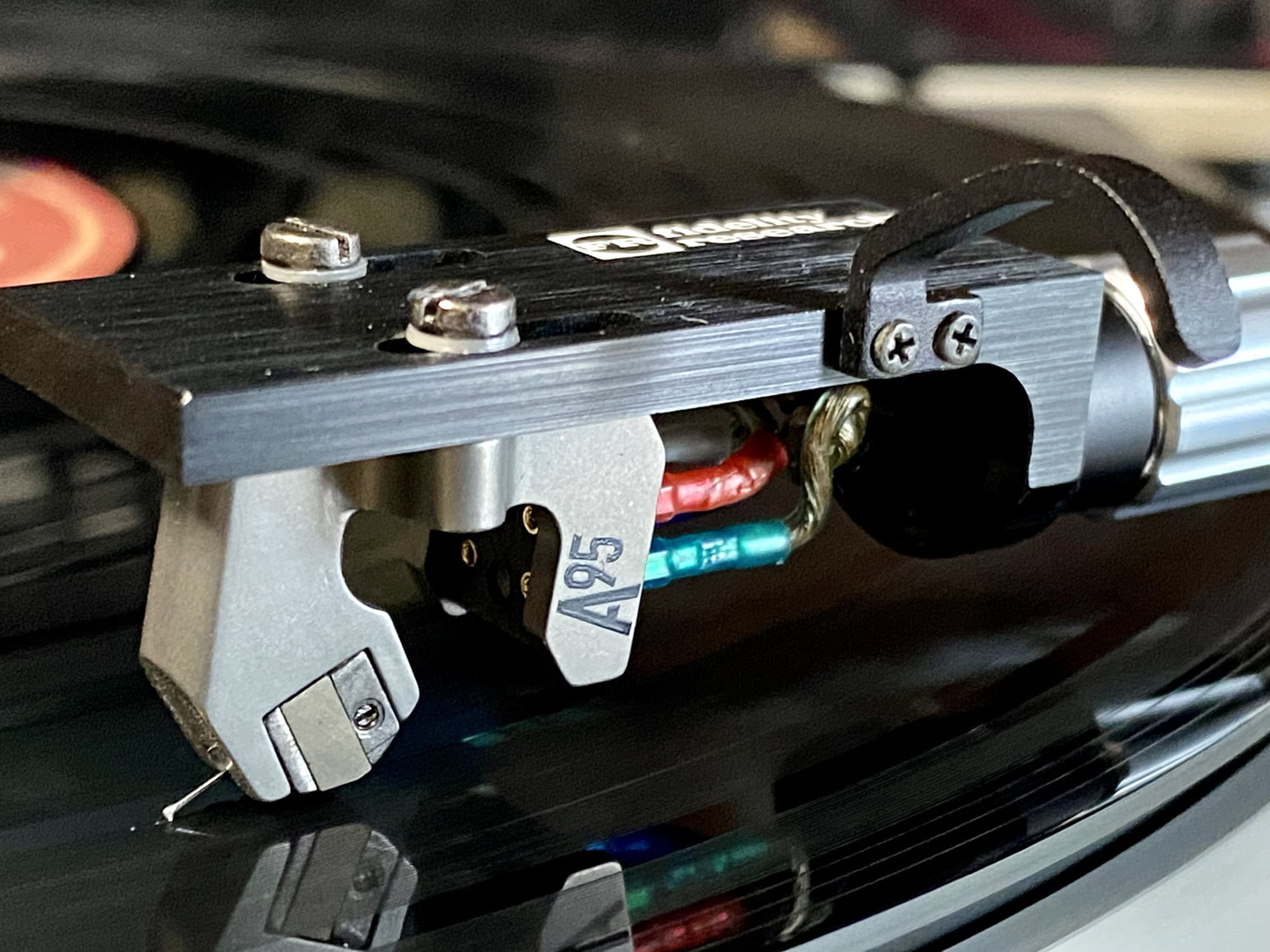
Lastly, it’s worth mentioning that I don’t just love working on turntables, I love turntables, cartridges, vinyl and vinyl playback, and writing about them so that others might benefit from sharing the knowledge. I’ve owned and still own some of the best cartridges and turntables available. That’s by design, and it hasn’t just happened. It’s one of the reasons I need an effective way to inspect cartridges, it helps customers and also helps me.
Here are some cartridges I own or have owned, with my ratings in brackets.
My current cartridge line-up: Ortofon MC A90 (A+++), Supex SDX-1100D (A++), Fidelity Research FR-1 Mk3 (A), Fidelity Research MC-202 (B+).
Previously owned cartridges: Ortofon OM-10M (D+), ADC XLM Mk3 (C-), Shure M97xE (C+), Goldring MC Elite (A), Ortofon Kontrapunkt H (A-), Ortofon MC Jubilee (A).
Cartridge Physics
First, let’s look briefly at the common stylus profiles to gain a better idea of how they should look. These styli are arranged from best to worst, left to right.
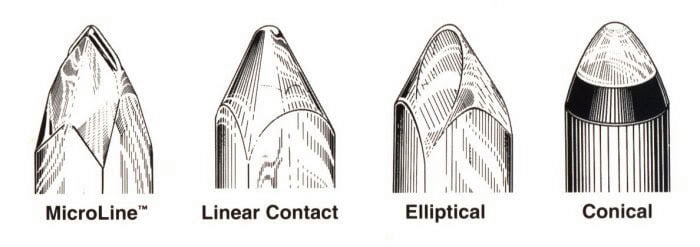
There are several things we want in an ideal stylus: hardness for long wear, low mass and low contact pressure, amongst others.
Long wear is achieved by using the hardest substance known – diamond. Nothing else works as well and alternatives are used only to save money.
Low mass and therefore low inertia are critical and achieved in various ways. One is to make the stylus as small as possible, whilst still correctly fitting the groove. This can be done by reducing the mass at the tip. Carving away the excess, unused diamond leaves the lightest tip, like the one on the left. The heaviest is on the right, all other things being equal. Shaping tiny diamonds to create complex facets and angles, with high precision isn’t a cheap exercise though. These better styli are more expensive because they cost more to produce.
Reducing the mass of the cantilever, using boron, or a sapphire tube for example also helps reduce moving mass. Making the moving parts coils of wire and not small magnets further reduces the moving mass and provide one of the key advantages of moving coil cartridges. Making these coils thinner and lighter by using fewer turns of special thin wire further reduces mass. Remember, we want the lowest inertia, and that requires the lowest moving mass. This is true whether we are talking about a speaker cone, microphone diaphragm or stylus.
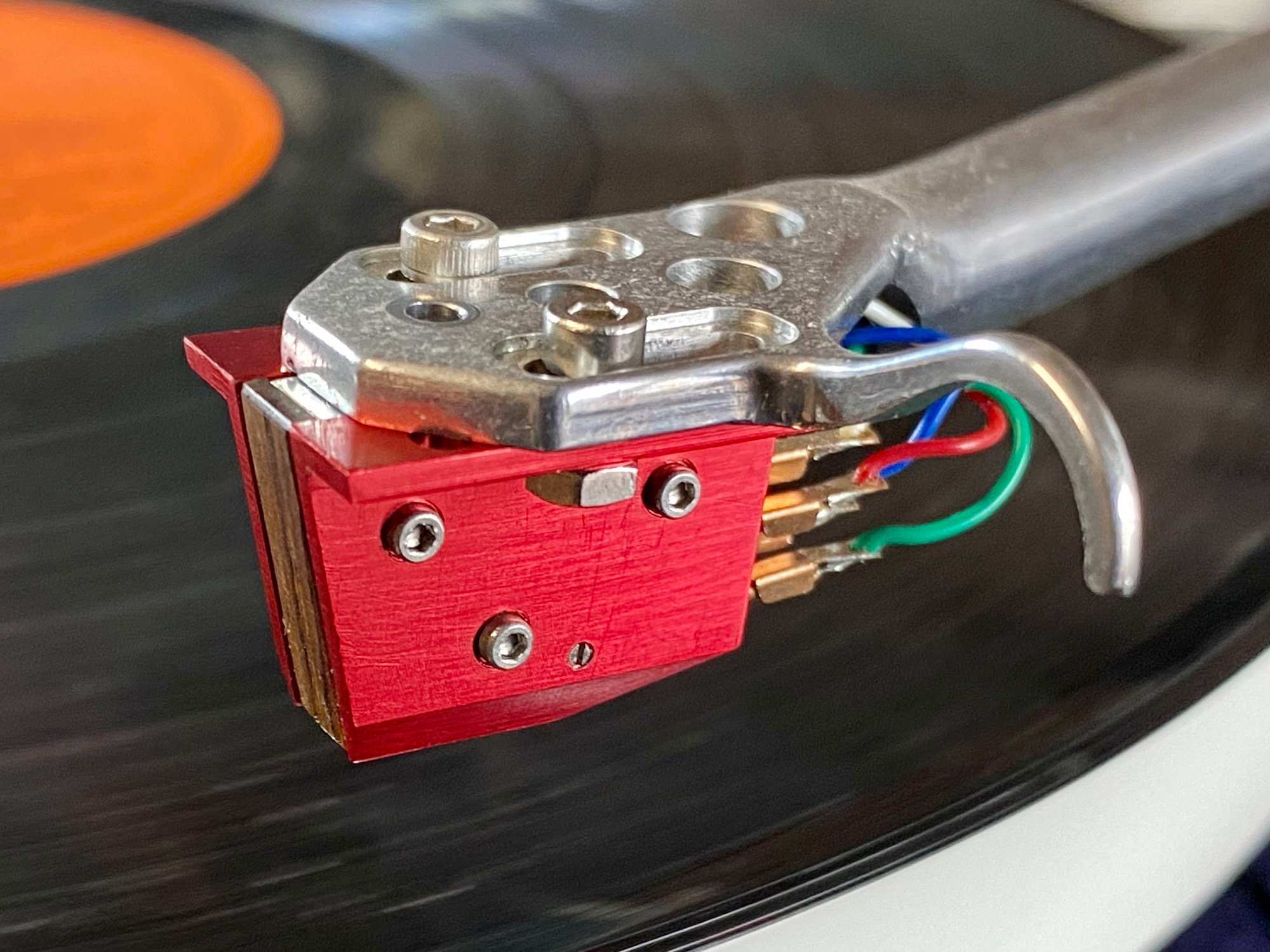
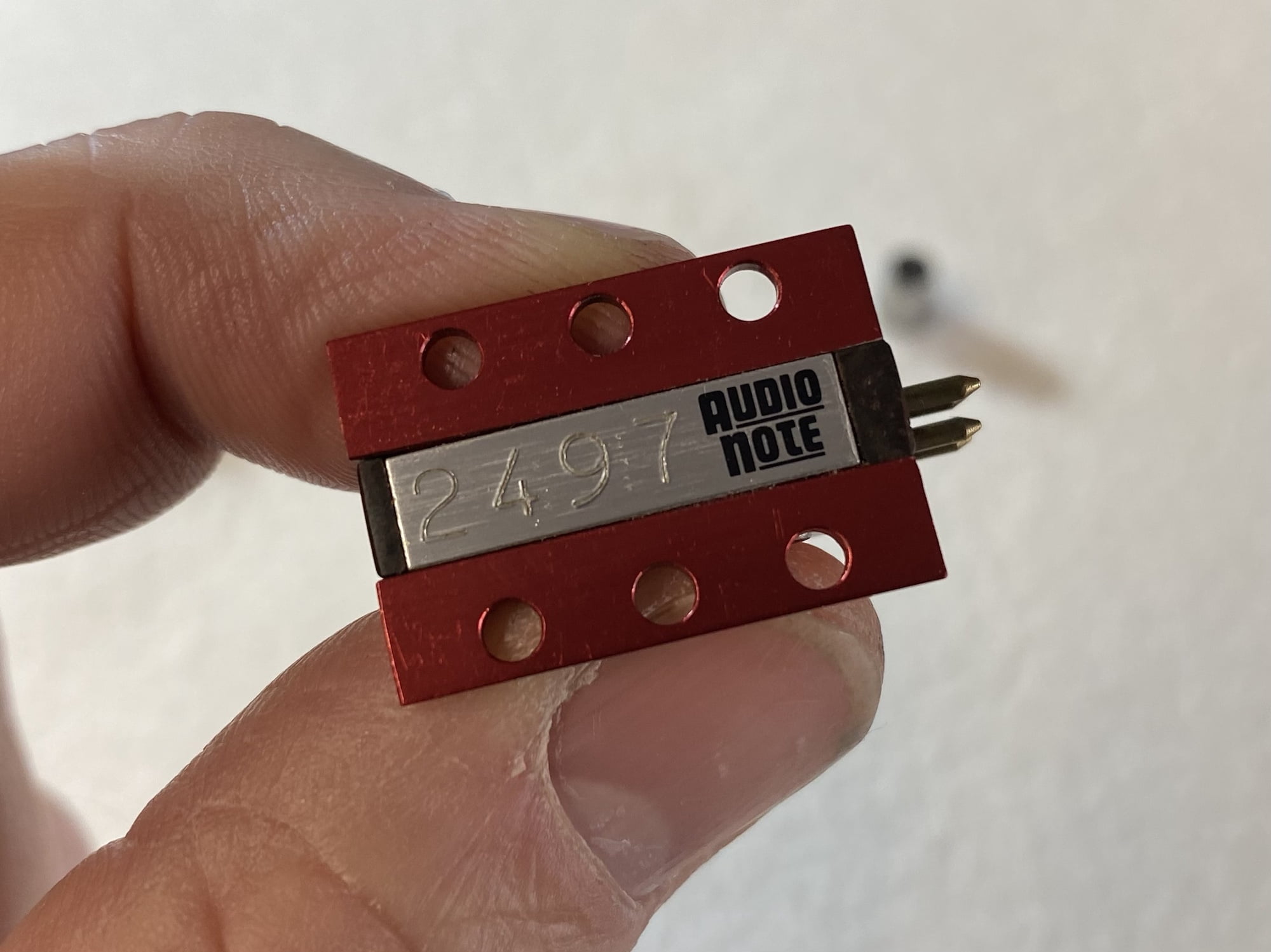
Low contact pressure is important because the lower the pressure at the point of contact, the lower the local heating from friction and therefore the lower the stylus and record wear. Conical and elliptical styli present a curved contact surface to the groove, the groove wall presenting a tangent to that curve. This means for a given tracking force, the pressure at the record surface is greatest with conical, and then elliptical types, as the radius of the curve increases. Pressure is equal to force divided by area or P = F/A. If the contact area is small, such as with a curved diamond contact surface, groove pressure is correspondingly high, for a given tracking force. It can be very high with spherical and conical styli, which is not a good thing.
With MicroLine, linear contact and Shibata types, as the name suggests, a flat surface is presented to the record groove. This flat or line-contact surface has a larger area. Therefore, for a given tracking force, the result is lower in-groove pressure, lower friction, less heat and less wear. This is why linear contact type styli tend to last 1000 – 2000 + hours, as compared with 300 – 500 hours for spherical and elliptical types. It’s also why they are much more expensive to purchase, again they cost more to make.
This contact area and pressure discussion is covered nicely in this Ortofon article, from their website.
As always, science provides the answers and the best cartridges are generally moving coil types with line-contact or MicroLine type styli and boron or maybe diamond or sapphire cantilevers. That’s what you’ll typically see in the most expensive and best-sounding cartridges and most of the cartridges featured here fit into the category of better moving-coil transducers. That’s not to say other types and variants can’t sound fantastic, they can, but when cost is no object, you’ll generally find moving coils, line-contact/MicroLine/Shibata, boron, diamond, silver, gold etc.
Cartridge Inspection
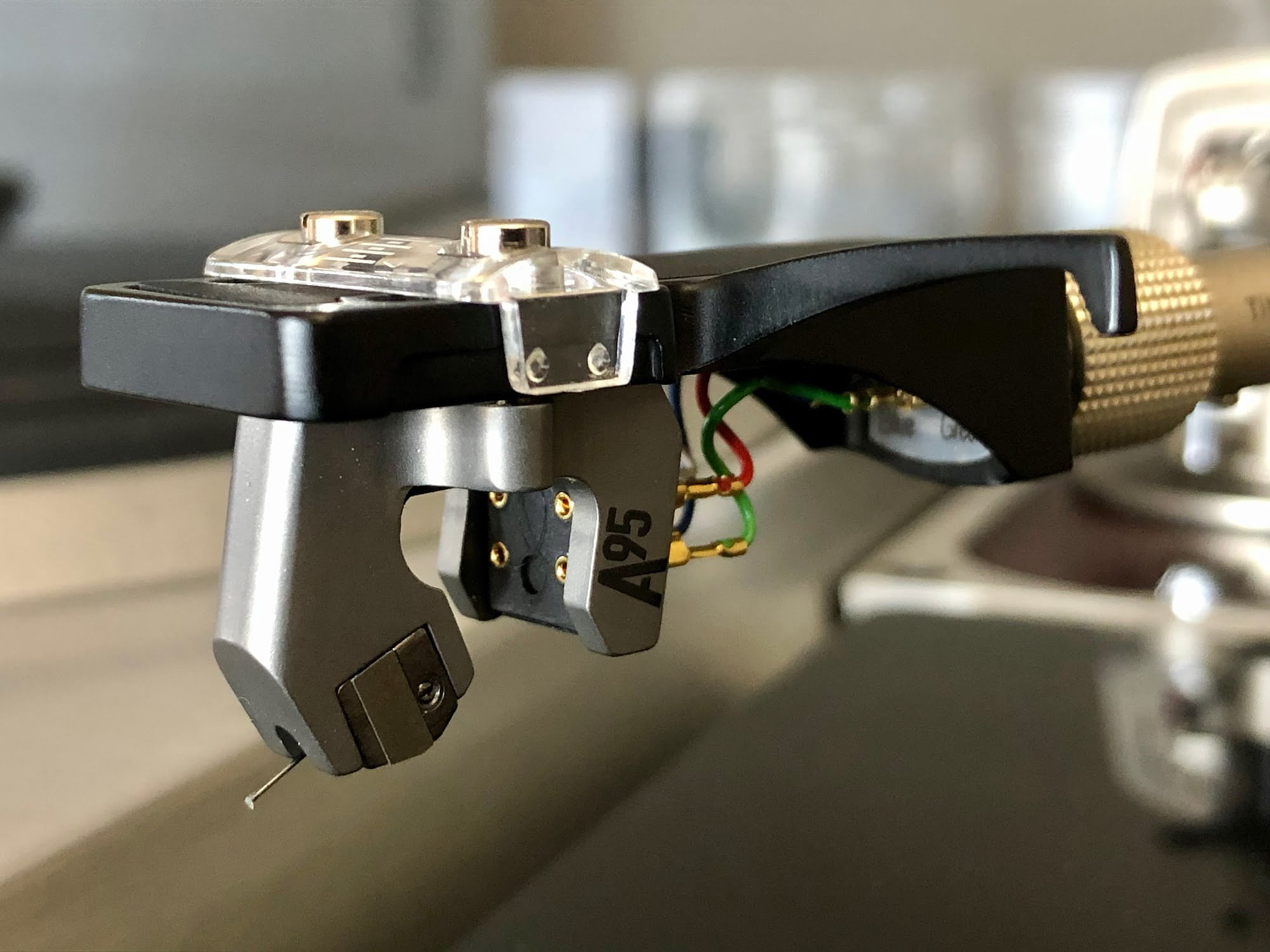
You might be wondering what I’m looking for when inspecting cartridges. I’m first looking at the overall condition – dirt, dust. Is anything broken or bent? Is the stylus in place and intact? Are all the parts that are meant to be there, actually there? Beyond that, I look for dirt, specifically on the stylus and stylus shank, the cantilever, and around the cantilever entry point into the cartridge body, check the condition of the cartridge pins, and wiring if it’s visible, test the suspension, and so on.
The second part involves electrical testing if that has been requested. One has to be very careful when testing the very fine coils of a moving coil cartridge. I typically like to mount and listen to a cartridge, as this tells me a lot about its general condition and everything I need and can’t necessarily see regarding its electrical and mechanical state.
Ortofon MC A90
This Ortofon MC A90 is my own and is a truly superb cartridge, one of the very best in my opinion, and the opinions of many others who know their cartridges. Mind you, it should be at the roughly $7000 AUD asking price! If you’ve never heard a really good moving coil, on the end of a great arm, turntable and step-up transformer, then you’ve really not heard what vinyl is truly capable of. I’ve never heard better bass, more realistic air or holographic imaging than with this superb transducer.
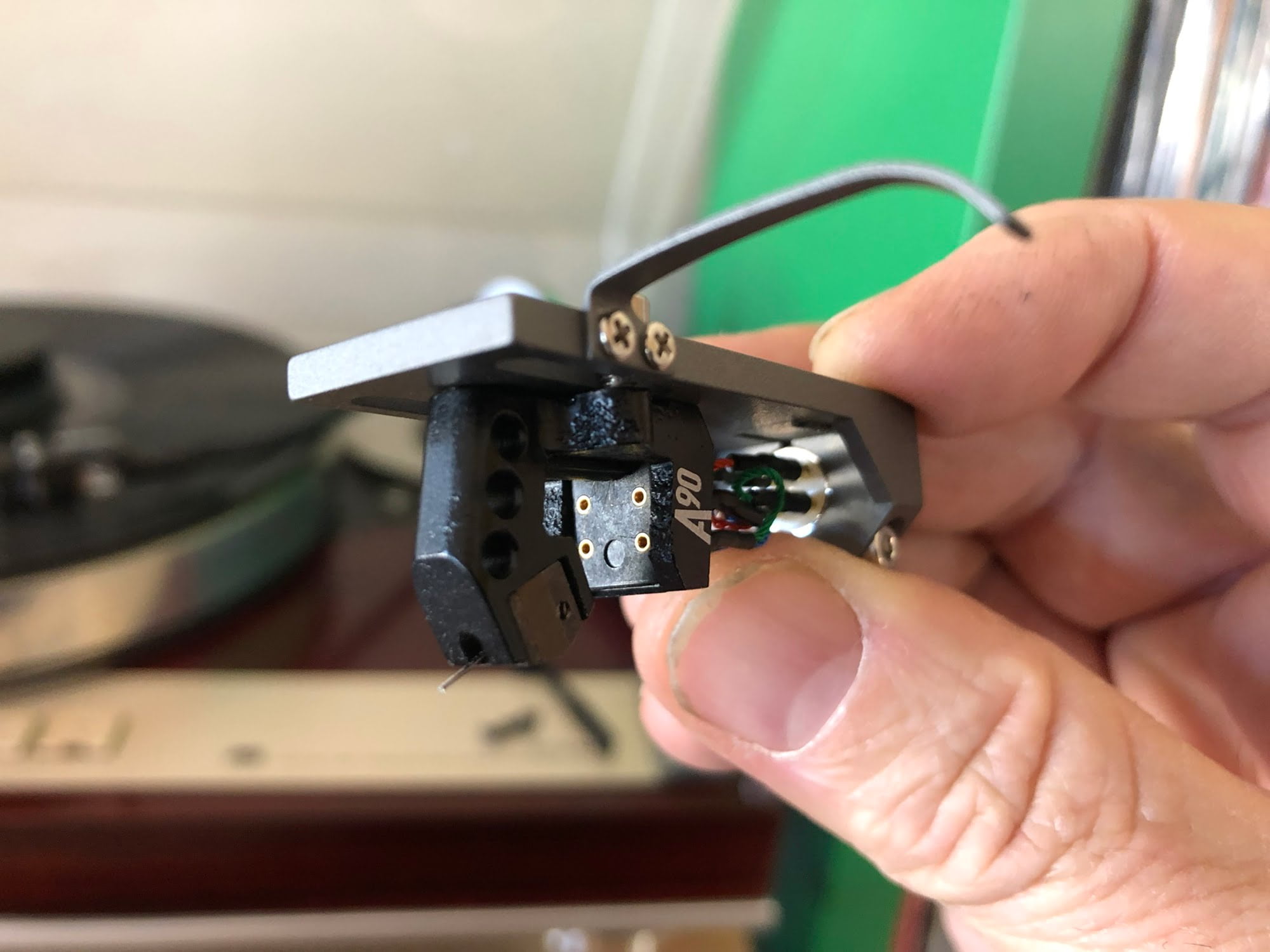
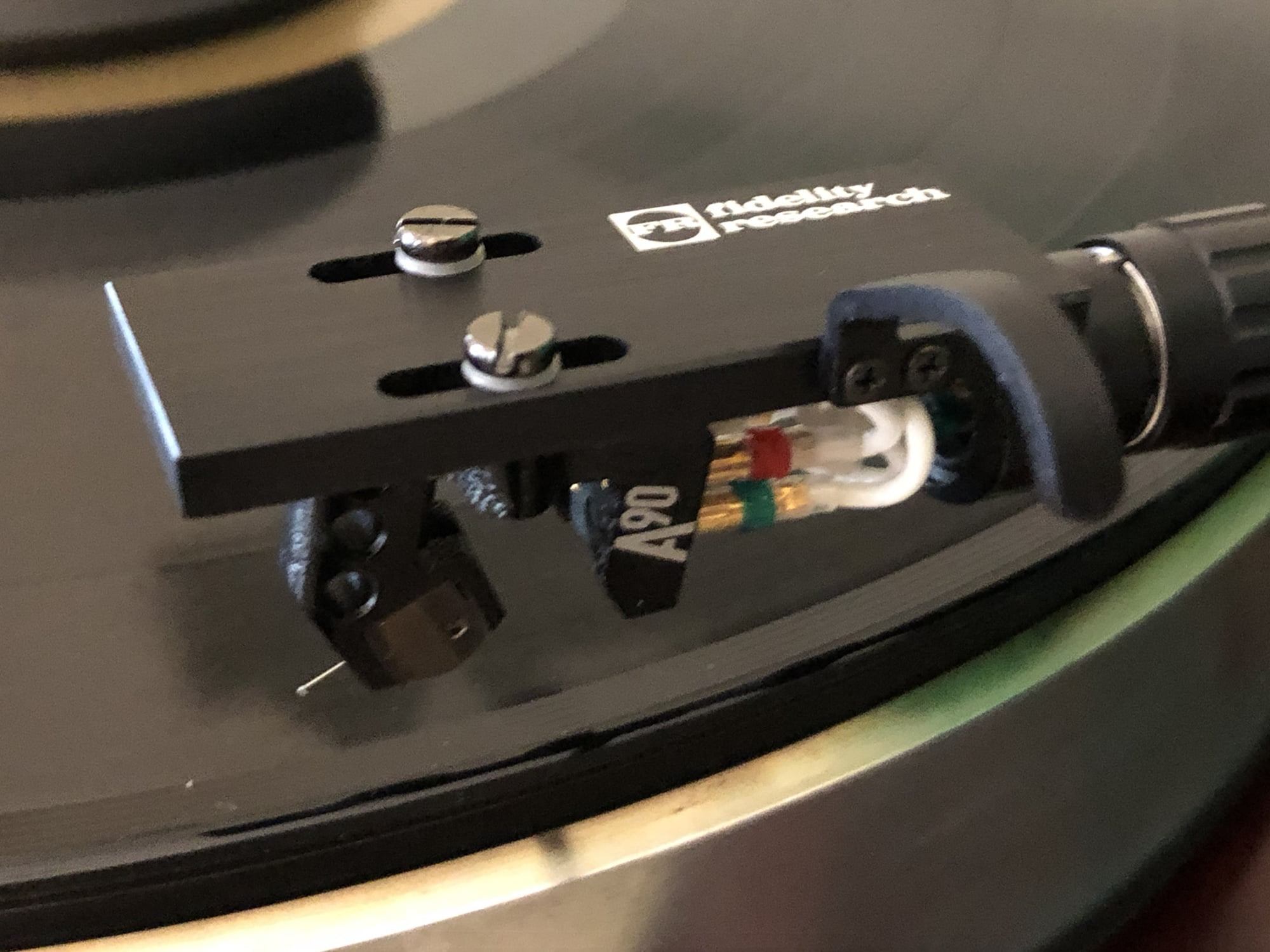
Specifications
Output voltage at 1 kHz, 5cm/sec. – 0,27 mV
Channel balance at 1 kHz – < 0,2 dB
Channel separation at 1 kHz – > 28 dB
Channel separation at 15 kHz – > 22 dB
Frequency range at – 3dB – 10 Hz – 80 kHz
Frequency response – 20 Hz – 20 kHz + / – 1 dB
Tracking ability at 315 Hz at recommended tracking force – 100 µm
Compliance, dynamic, lateral – 16 µm/mN
Stylus type – Special polished Nude Ortofon Replicant 100 on Boron Cantilever
Stylus tip radius – r/R 5/100 µm
Tracking force range – 2,0-2,5 g (20-25 mN)
Tracking force, recommended – 2,3 g (23 mN)
Tracking angle – 23°
Internal impedance, DC resistance – 4 Ohm
Recommended load impedance – > 10 Ohm
Cartridge body material – SLM Stainless Steel
Cartridge weight – 8 g
I took these images after an unfortunate accident, earlier in 2021. To all those who’ve ever had an accident with one of their own cartridges, and I’ve chatted with a few of you, I feel your pain. My MC A90 is currently on its way back from Soundsmith, more about that process here, but let’s look at it before the accident, and after.
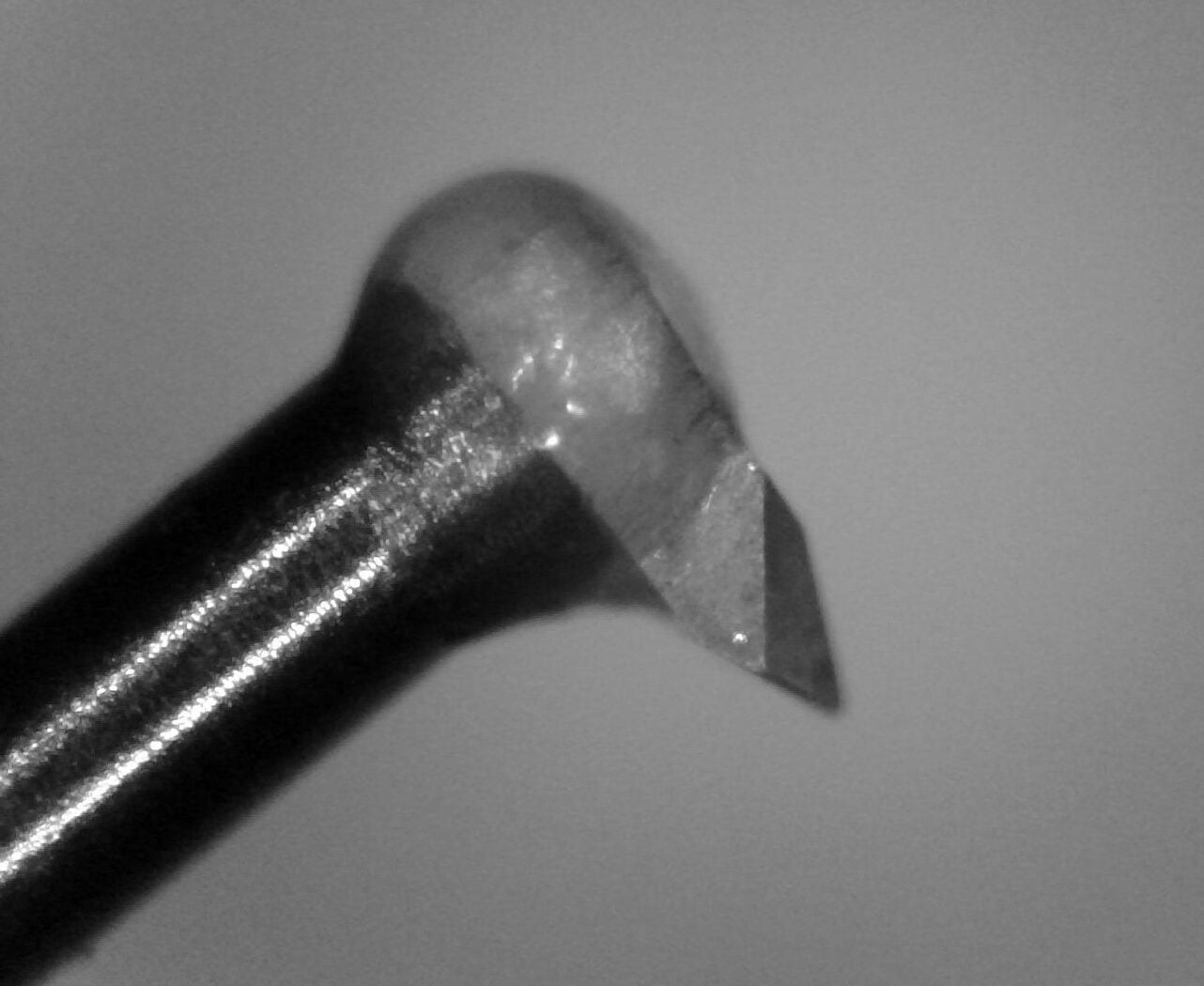
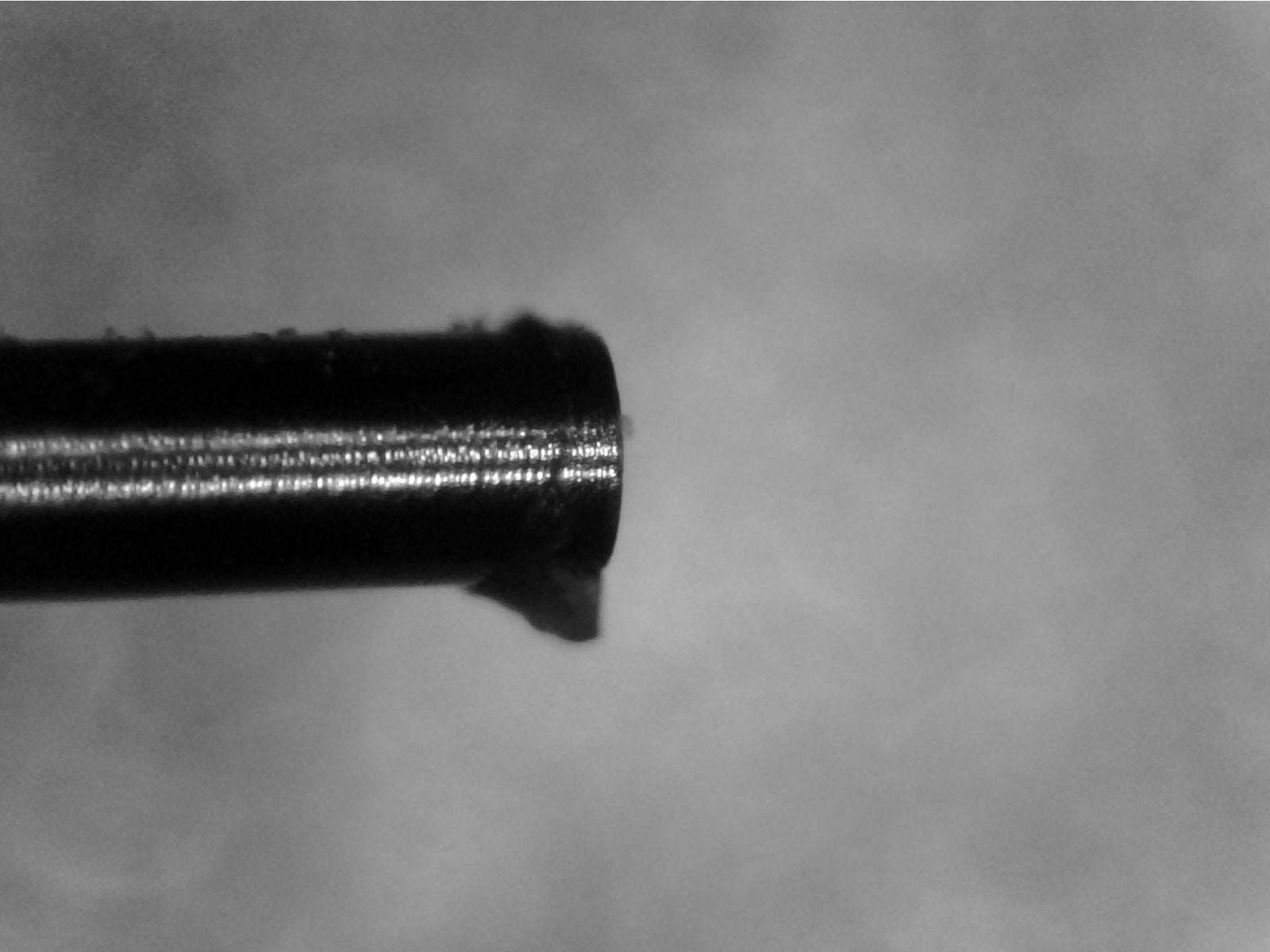
It’s clear from these images exactly what’s happened, though the cause shall remain unspoken. My USB microscope has both adequate magnification and resolution to reveal all the detail. By the way, sending this cartridge away to Ortofon for repair is a multi-thousand-dollar exercise. Worth it, I’m sure, as they provide you with a new cartridge in return, but Soundsmith provides a much more affordable option. I haven’t seen the results yet but I’ll post them here when my cartridge arrives back safely.
Supex SDX-1100D
This is another cartridge from my collection and one that I brought back to life through some very painstaking deep cleaning. It’s an extremely rare and beautiful cartridge from a highly regarded manufacturer. This cartridge cost around $3200 AUD – in 1981!! No, I’m not kidding, this cartridge cost as much as a car, more than my entire Accuphase C-202 preamplifier brand new! I have to tell you though, it sounds superb, one of the very best I’ve ever heard. I certainly wasn’t expecting that, given its condition.
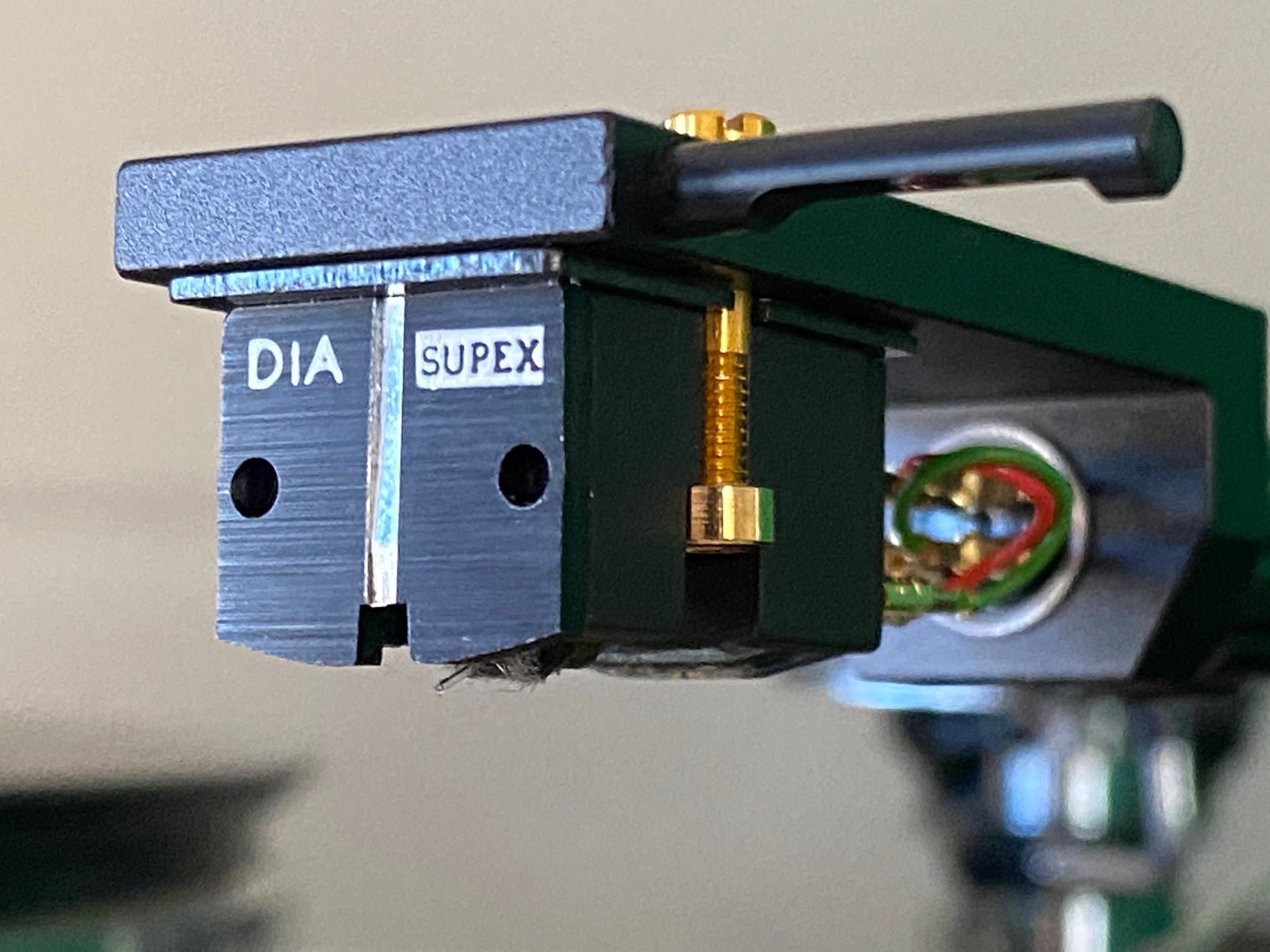
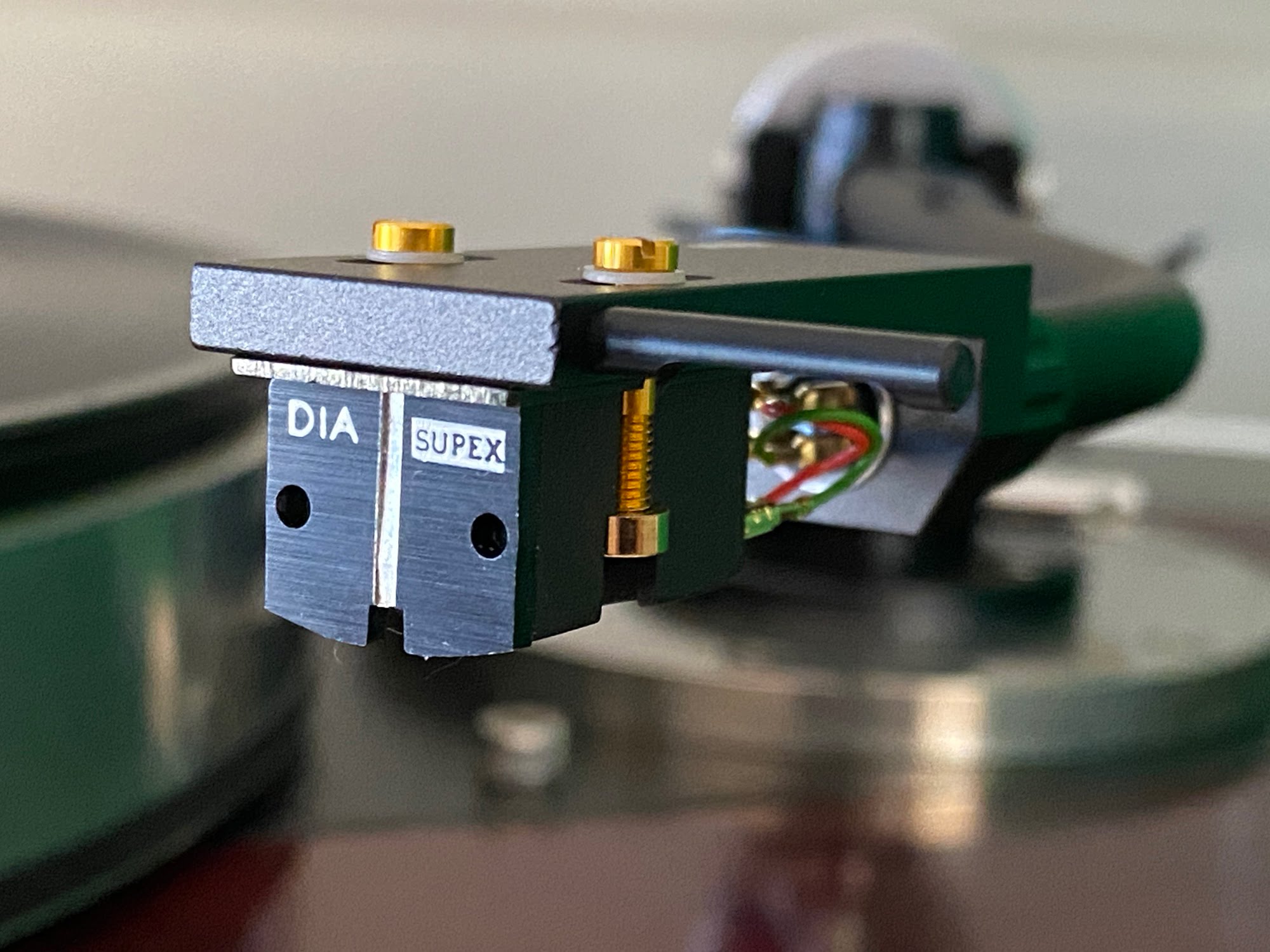
The SDX-1100D features a beautiful line-contact diamond with a superbly smooth profile, as one would expect from a premium offering from the golden era. Most interestingly, and as hinted at by the ‘D’ suffix, this model of SDX-1100 used a diamond cantilever. That’s right, the entire cantilever, rather than being made of aluminium or even boron, is made of diamond.
Note the extremely low impedance of this cartridge. Super-low impedance cartridges like this also have very low outputs, because of having such small coils with limited turns of wire, to keep everything as light as possible. This requires the absolute best in terms of amplification and step-up transformers, but yields the best sonic results, with the right gear. The SDX-1100D has an internal resistance of just 1.5 Ohms, astonishingly low. My next lowest impedance cart is the Ortofon MC A90, with an internal resistance of around 4 Ohms. Anything under 10 Ohms is considered low, below 5 Ohms is really low!
Specifications
■ Price 270,000 yen – yikes!
■ Power generation method MC type
■ Output voltage 0.2mV (3.54cm / sec 1kHz)
■ Stylus pressure 1.5-2.1g (optimum 1.8g)
■ Reproduction frequency band 20-45,000Hz-4dB
■ Channel separation 27dB / 1kHz
■ Channel balance 0.5dB
■ Compliance 9 × 10 -6 cm/dyne
■ Load resistance 2Ω or more
■ Internal impedance 1.5Ω
■ Needle tip line contact
■ Own weight 6.7g
■ Replacement needle New replacement (216,000 yen)
■ Released 1981
■ End of sale around 1990
■ Remarks, prices from around 1981
■ Uses natural diamond cantilever
The cartridge came to me years ago in deplorable condition, heavily corroded, dirty and almost a write-off. I spent a long time carefully cleaning it, removing years of dust, dirt and accumulated gunk. I never expected it to even be usable again, but let’s take a look at how it turned out.
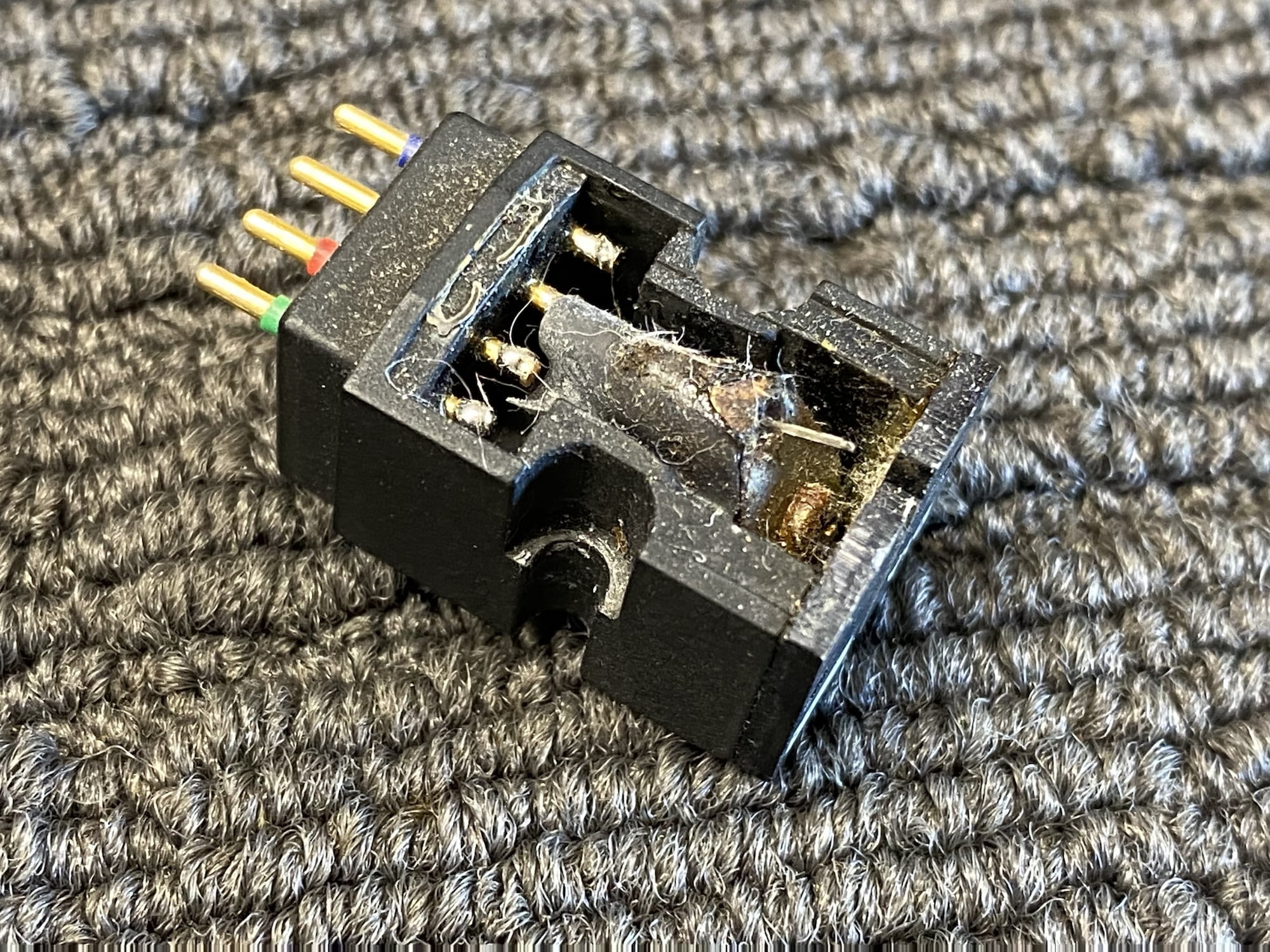
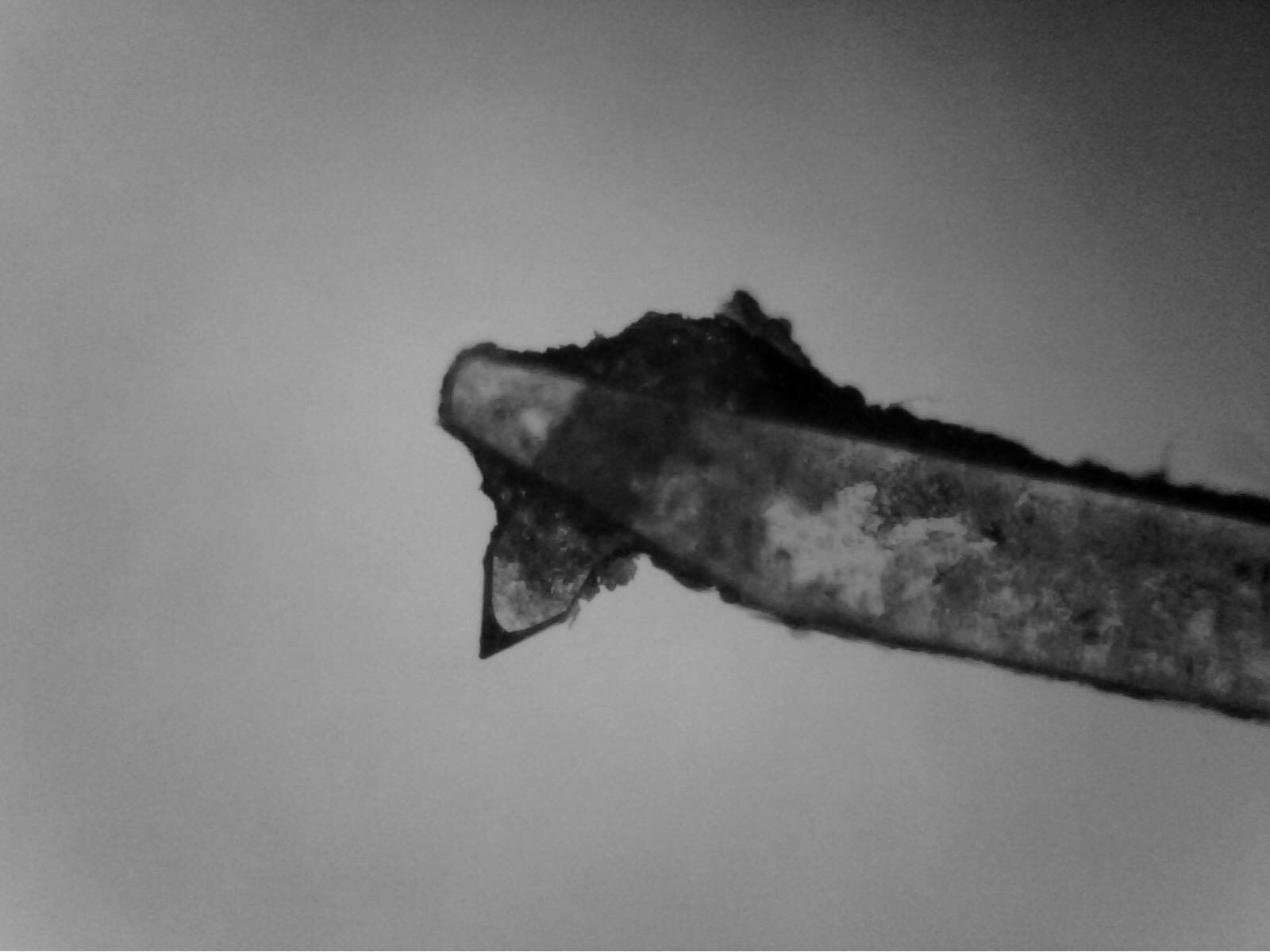
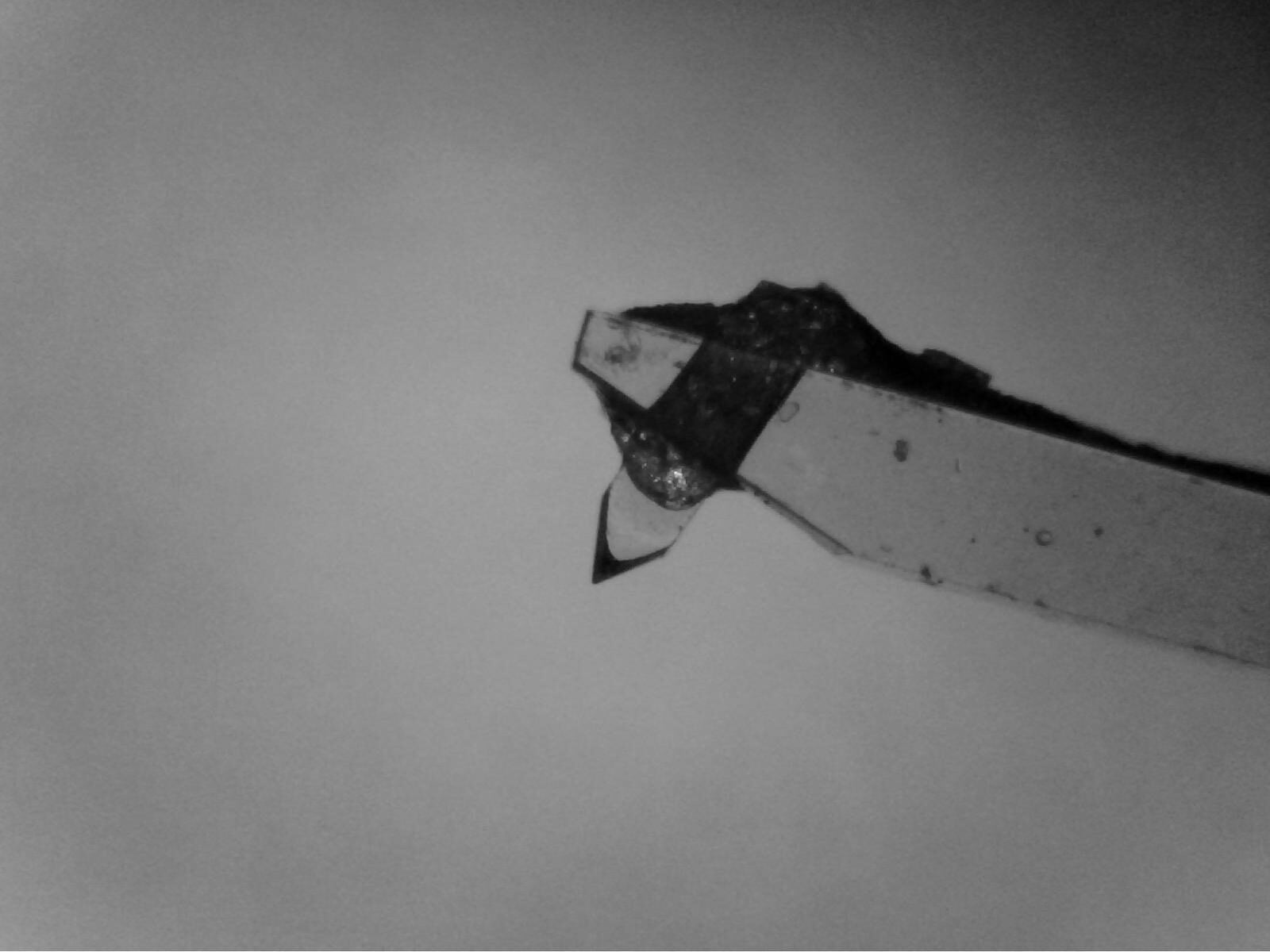
Ortofon MC Jubilee
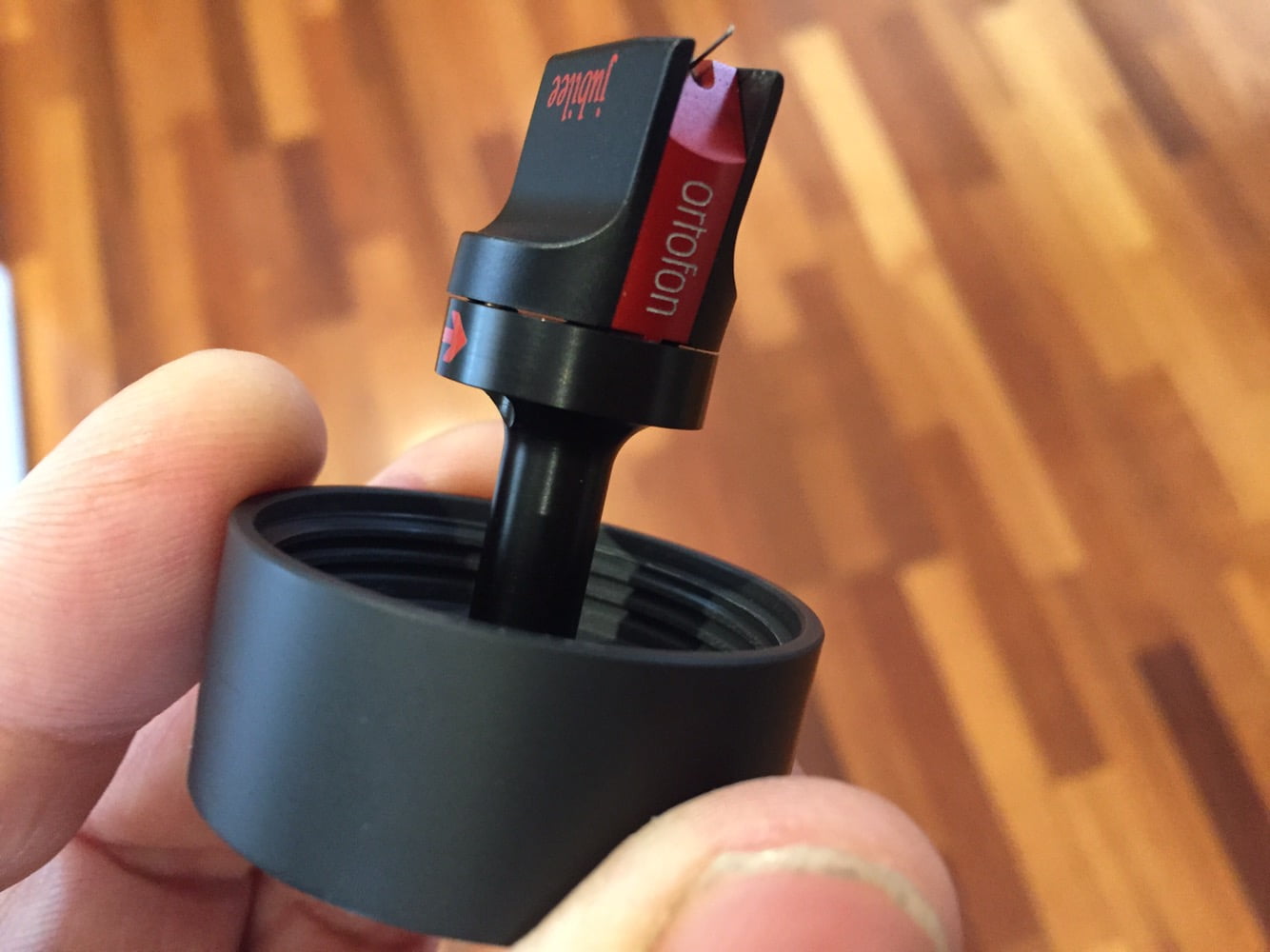
I owned this Ortofon MC Jubilee up until about five years ago and purchased it new, back in around 2010. The MC Jubilee is a very fine cartridge, based on Ortofon’s then-current Kontrapunct body style, like his Kontrapunct H. The H is the cartridge I owned prior to purchasing the MC Jubilee and it was also one of the nicest-sounding MC carts I’ve owned, very smooth and mellow.
The Kontrapunct series evolved into the Cadenza series and the MC Jubilee was the pinnacle of that Kontrapunct product line and fine-sounding cartridge indeed, a favourite of mine. The equivalent now is the Cadenza Black, with virtually identical specifications and a roughly $3500 AUD price tag.
Specifications
Output voltage at 1000 Hz, 5cm/sec. – 0,34 mV
Channel balance at 1 kHz – < 1 dB
Channel separation at 1 kHz – > 27 dB
Channel separation at 15 kHz – > 20 dB
Frequency range at – 3dB – 20-60.000 Hz
Frequency response – 20-20.000 Hz + 1,5 / – 0 dB
Tracking ability at 315Hz at recommended tracking force – 100 µm
Compliance, dynamic, lateral – 16 µm/mN
Stylus type – Nude Shibata
Stylus tip radius – r/R 6/50 µm
Tracking force range – 2,0-2,5 g (20-25 mN)
Tracking force, recommended – 2,3 g (23 mN)
Tracking angle – 20°
Internal impedance, DC resistance – 5 Ohm
Recommended load impedance – > 10 Ohm
Cartridge body material – Stainless steel/aluminium
Cartridge weight – 10,5 gram
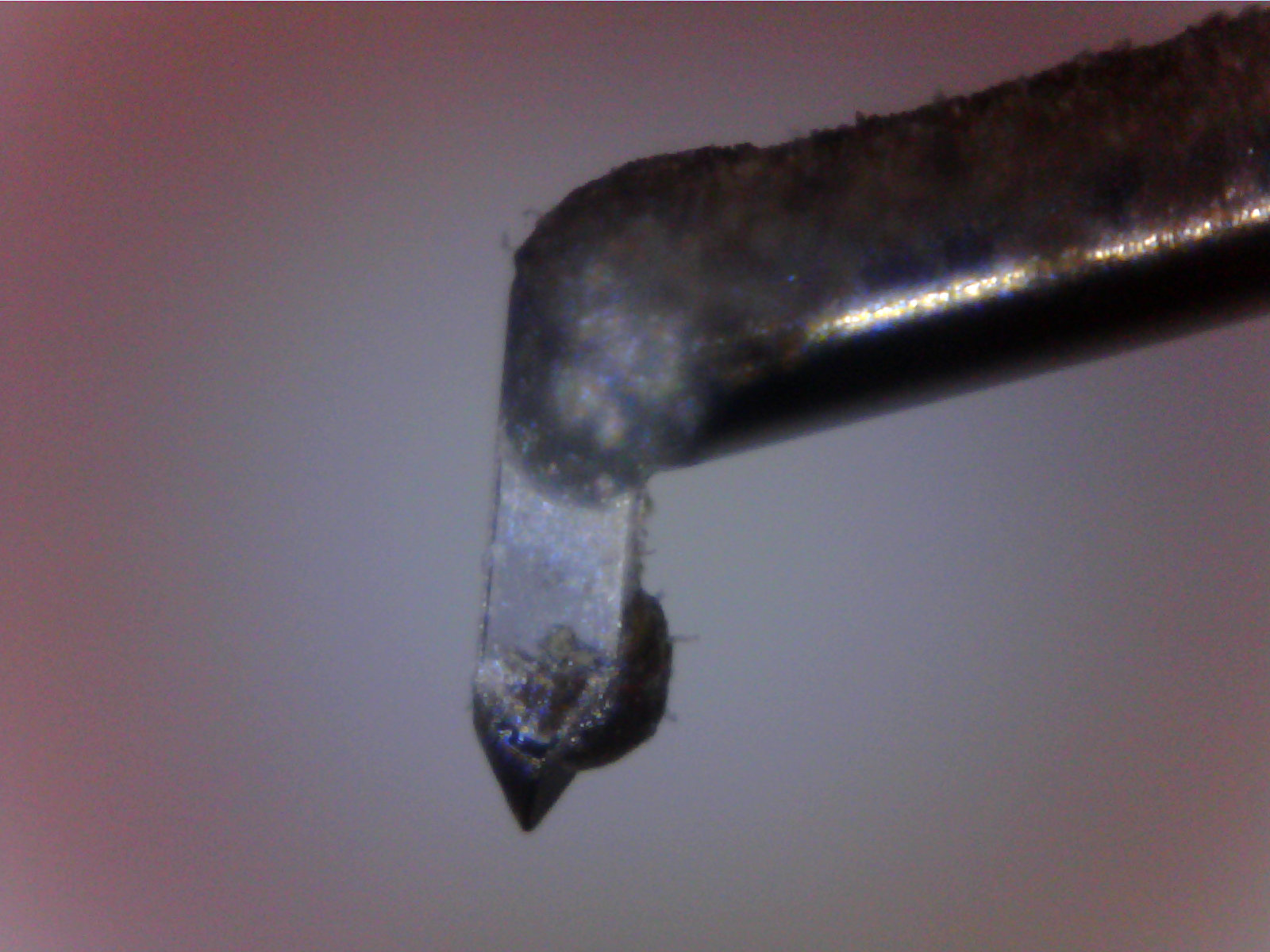
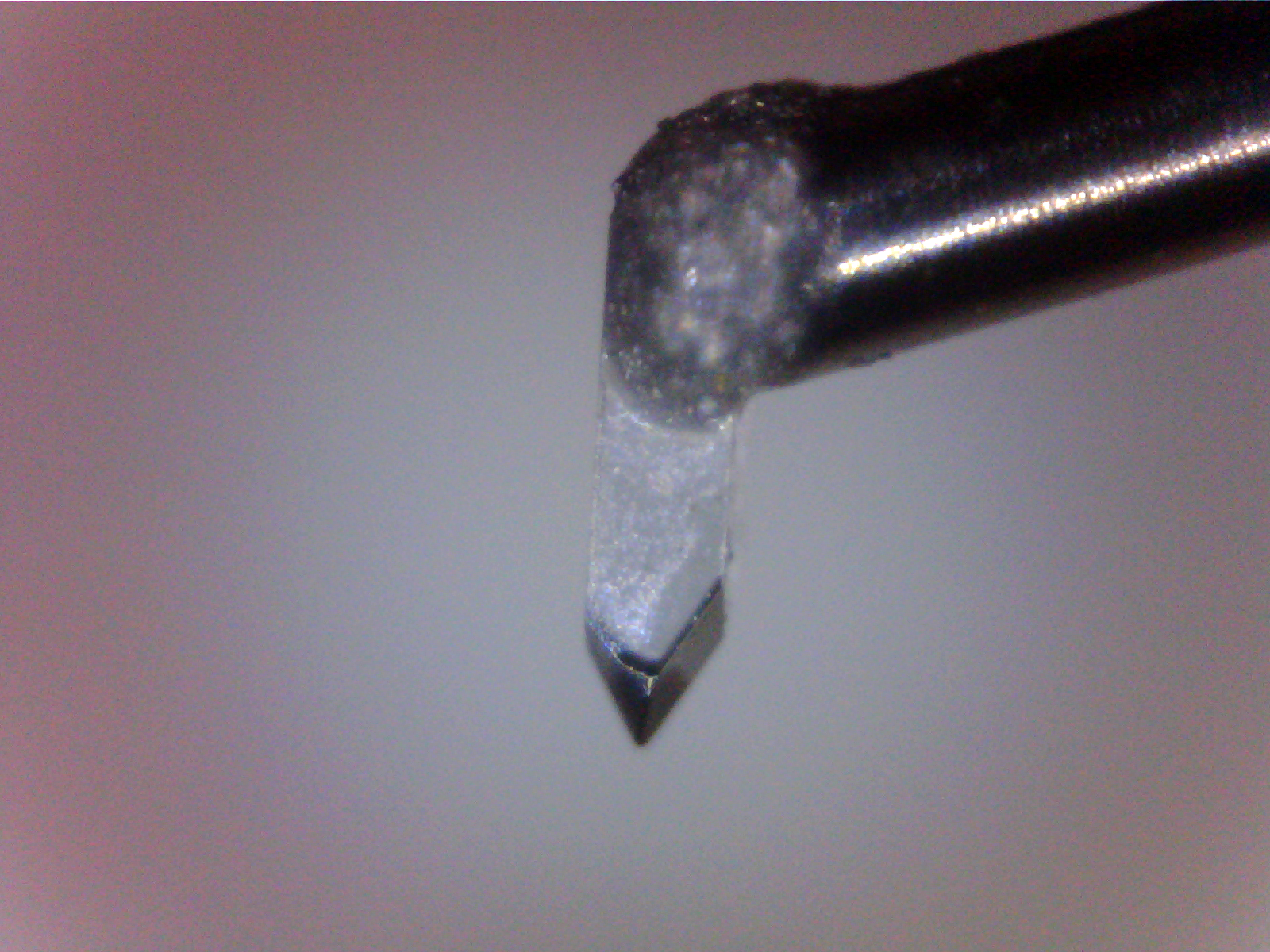
These days, I tend to take micrograph images in black and white. This reduces chroma noise and provides me with what I feel are the highest resolution images and finest detail. It’s cool to see these styli in colour though.
Denon DL-305
I recently inspected and cleaned this one for a customer, to provide him with a better idea of its wear status, after he purchased it. For those who don’t know, Denon has a rich history of phono cartridge manufacture and the DL-305 is one great example. The DL-305 uses a very thick boron pipe cantilever, rather than a rod, so the diamond looks tiny by comparison. I’m sure it sounds good, though, in typical Denon fashion, there’s no special stylus, just a basic elliptical profile. It’s a fairly compliant cartridge for a more exotic MC, that says something about its era as lower mass tonearms were much more popular then.
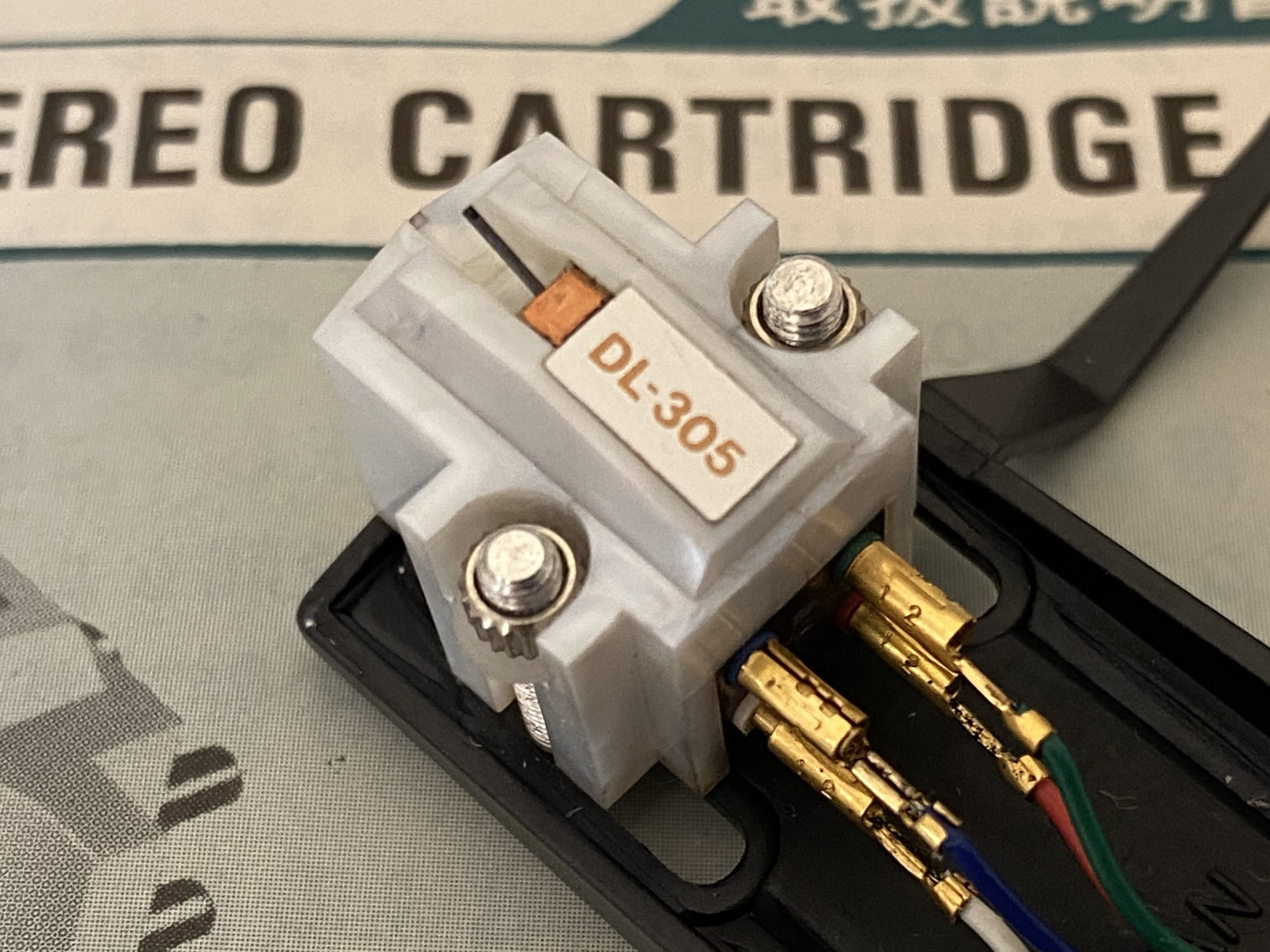
| Form | MC type cartridge |
| Output voltage | 0.2mV (1kHz is horizontal 5 cm/s) |
| Play frequency range | 20Hz – 75kHz |
| Output load impedance | 40ohms (20Hz – 20kHz) |
| Conformity load | 100ohms or more (about [ transformer ] 40 ohm) |
| Channel separation | 28dB or more (1kHz) |
| Channel balance | Less than (1kHz) 1dB |
| Static compliance | 35×10 to 6 cm/dyne |
| Dynamic compliance | 14×10 to 6 cm/dyne (100Hz, record measurement) |
| Needle point (chip) | 0.05×0.1mm angle solid diagram special ellipse needle |
| Proper needle pressure | 1.2�}0.2g |
| Tare | 5.8g |
| Needle exchange | Main part exchange (\39,000) |
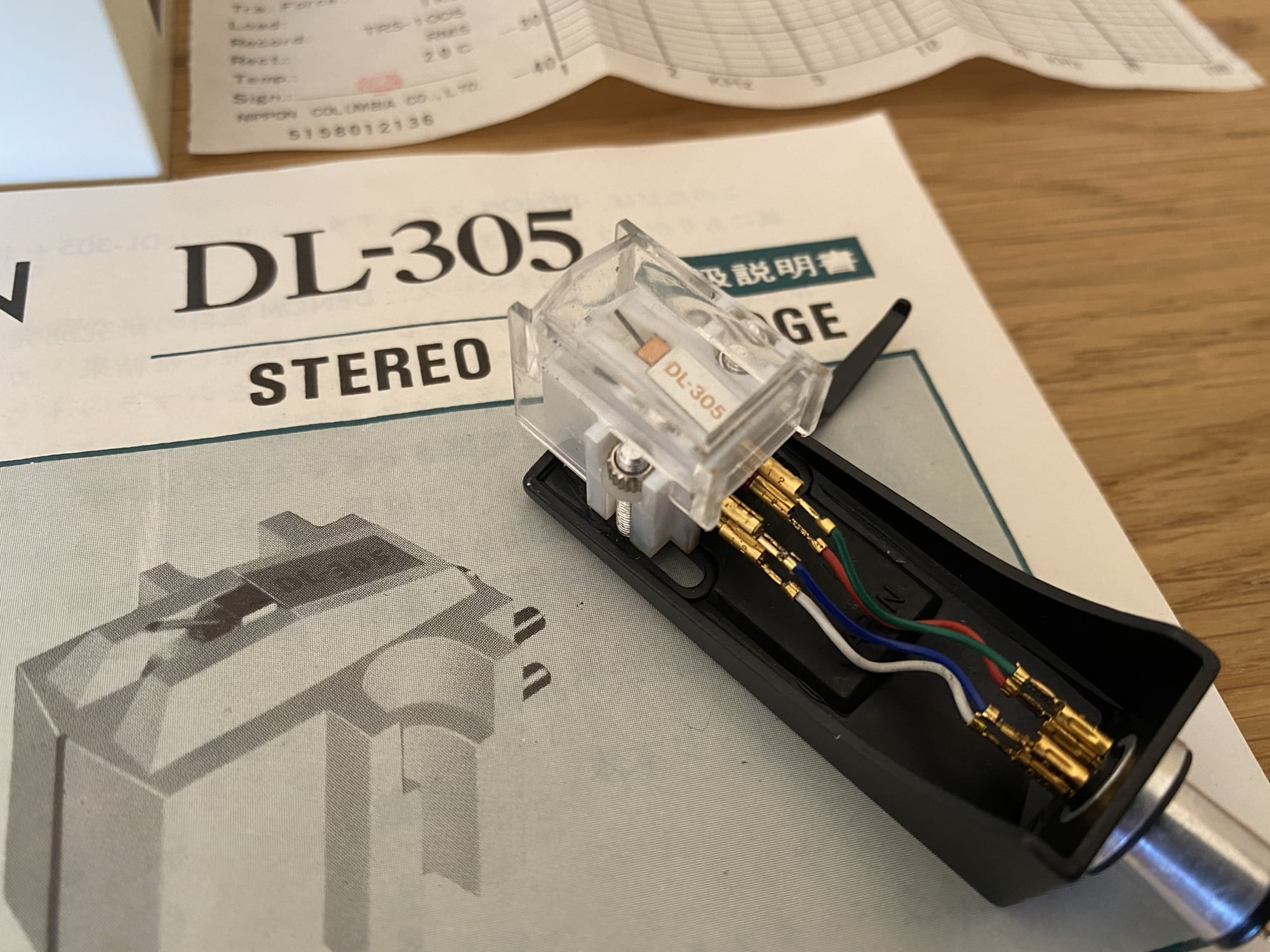
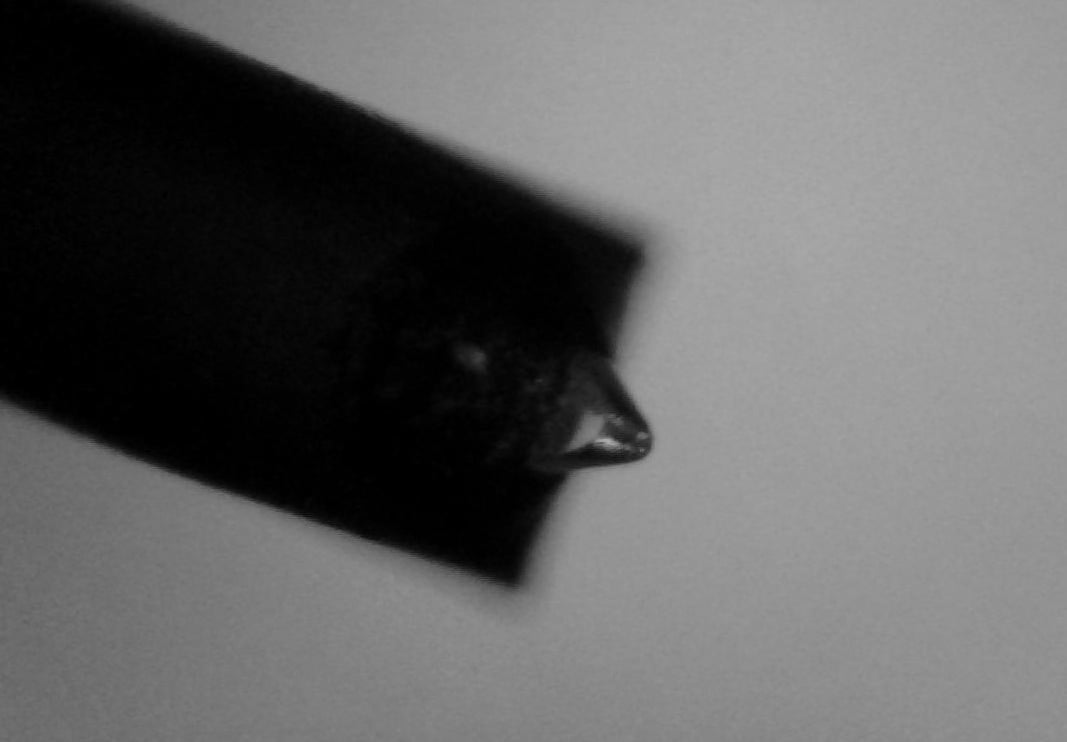
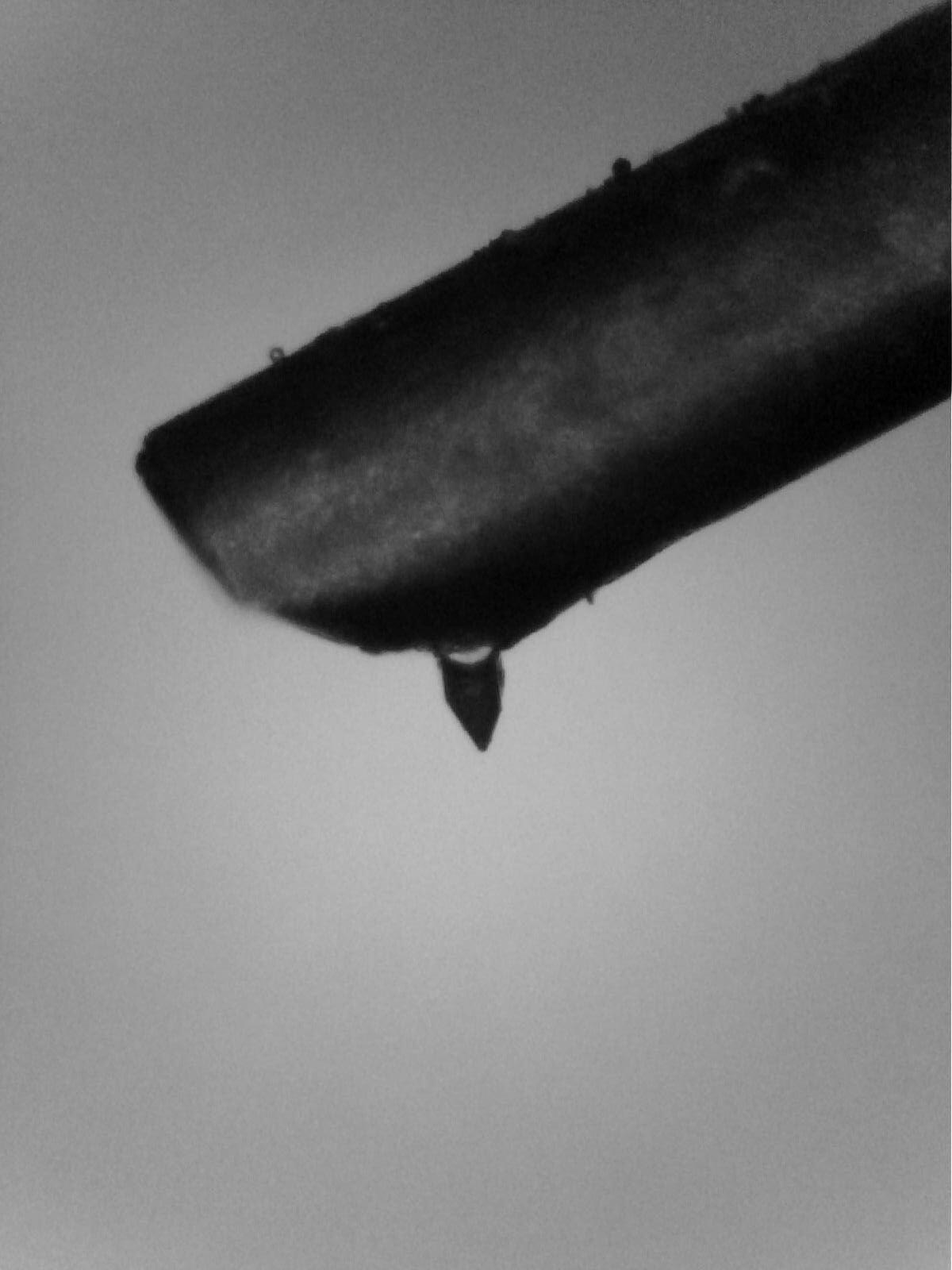
Audio Technica AT OC- Mk3
This is another of those cases where a customer loves his vinyl and didn’t realise how badly worn his cartridge was. I fitted the Audio Technica AT-OC9 Mk3 to his Kenwood KD-500 a couple of years ago and told him to keep an eye on the stylus for wear. The problem is, most people can’t even see their stylus, let alone know what to look for in terms of signs of wear.
That proved to be the case here, the stylus wore away through many hundreds of hours of use and possibly some wet-cleaning of records and/or stylus. That’s a story on its own but be warned, don’t play records wet or even damp and don’t clean styli with liquids unless you know what liquids to use and exactly what you are doing.
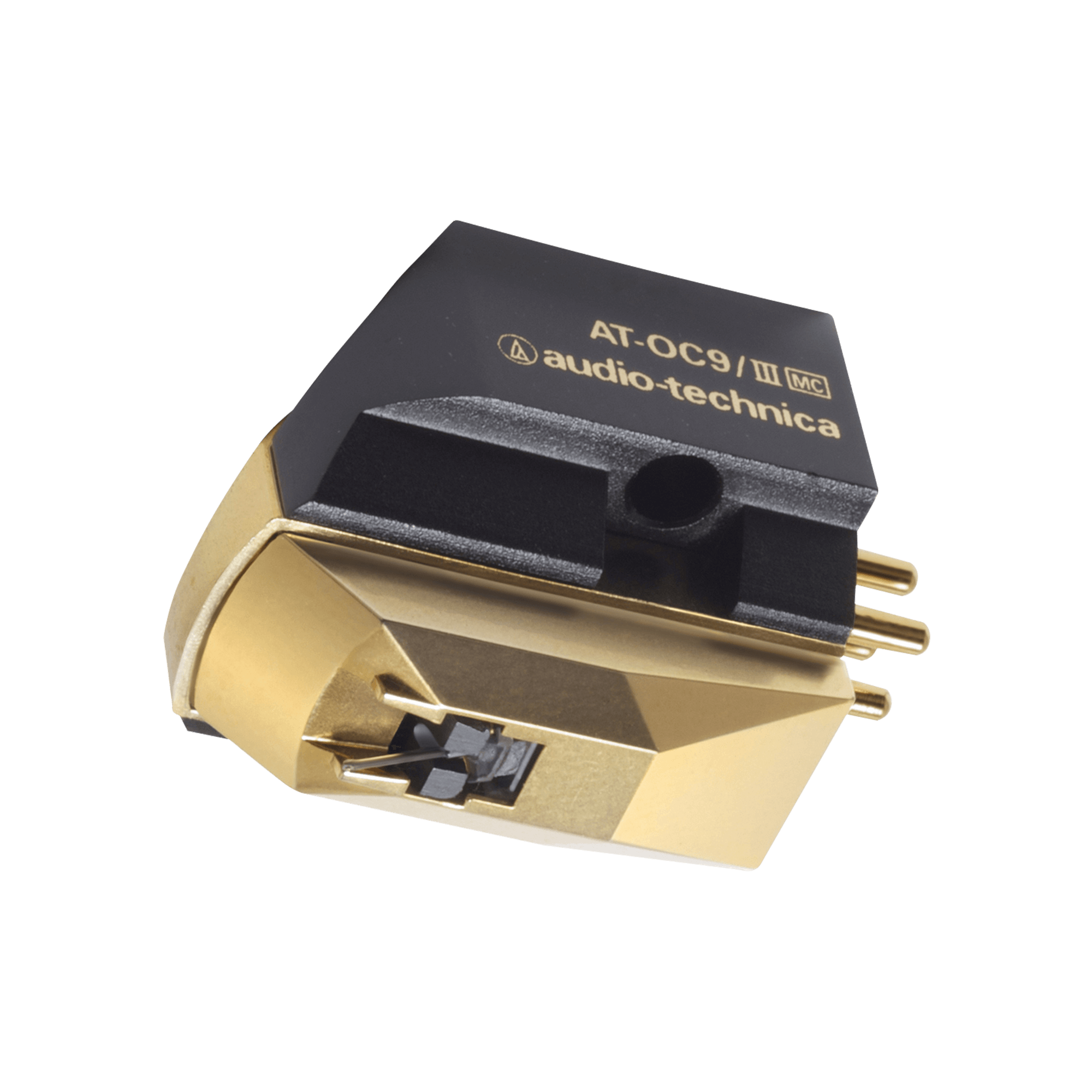
The Audio Technica AT-OC9 Mk3 is another favourite of mine, recently discontinued and replaced with several new variants in the new OC9x series. These cartridges offer great value, excellent diamonds for the asking prices and always sound clean, resolving and airy, at least in the previous Mk3 guise, so I have no reason to believe these new models will be any different. The one to get looks to be the special AT-OC9XSL line contact variant, predictable given what I’ve mentioned previously about the advantages of such profiles.
Specifications
| Frequency Response | 15 – 50,000Hz |
|---|---|
| Channel Separation | 30dB (1kHz) |
| Vertical Tracking Angle | 23° |
| Stylus Construction | Nude Square Shank |
| Recommended Load Impedance | Min 100Ω |
| Coil Impedance | 12Ω (1kHz) |
| DC Resistance | 12Ω |
| Coil Inductance | 25 µm (1kHz) |
| Output Voltage | 0.4mV (1kHz and 5cm/sec.) |
| Output Channel Balance | 0.5dB (1kHz) |
| Stylus Shape | Special Line contact stylus (curvature radius: ) |
| Cantilever | 0.26 mm diameter solid boron |
| Static Compliance | 35×10-6cm/dyne |
| Dynamic Compliance | 18×10-6cm/dyne (100Hz) |
| Dimensions | 17.3 (H) x 16.8 (W) x 25.7 (L) mm |
| Accessories Included | One non-magnetic screwdriver; one brush; two washers; two 12mm mounting screws; two nuts; two 18mm mounting screws; one plastic protector; one set of PCOCC Lead Wires (AT6101) |
| Body Material | Aluminium |
| Stylus Curvature Radius | 40 x 7µm |
| Type | Dual Moving Coil |
| Weight | 8.0g |
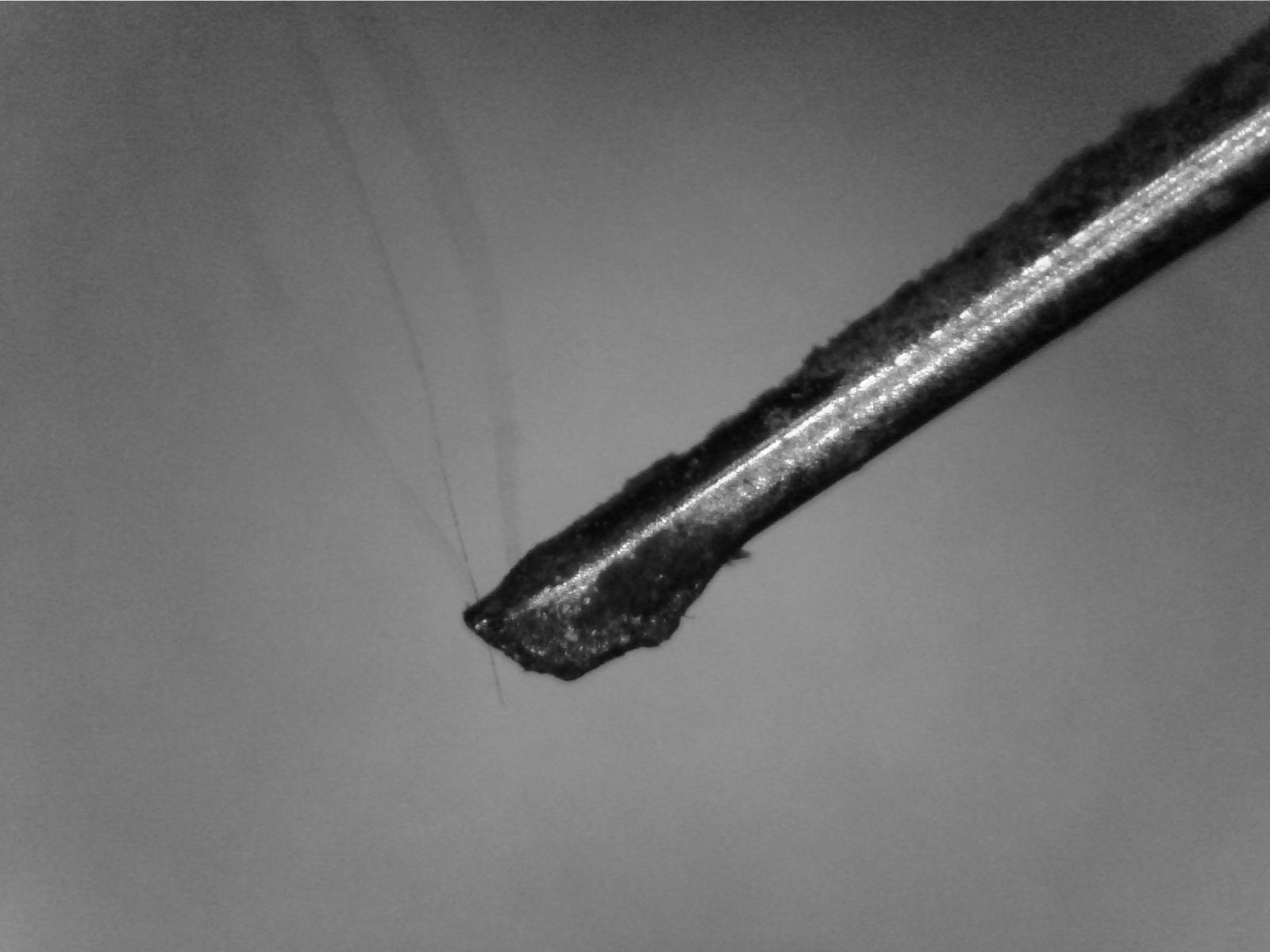
Fidelity Research MC-202
Take a look at this lovely Fidelity Research MC-202, re-cantilevered and re-tipped a couple of years ago for me by Garrot Bros in Melbourne. On this occasion, I asked for a Garrott Micro-Tracer stylus, similar to the elliptical or hyper-elliptical type originally fitted, on an aluminium cantilever. You’ll note the nice straight cantilever and reasonably clean, though very sharp stylus. I performed this cartridge inspection just before writing this article.
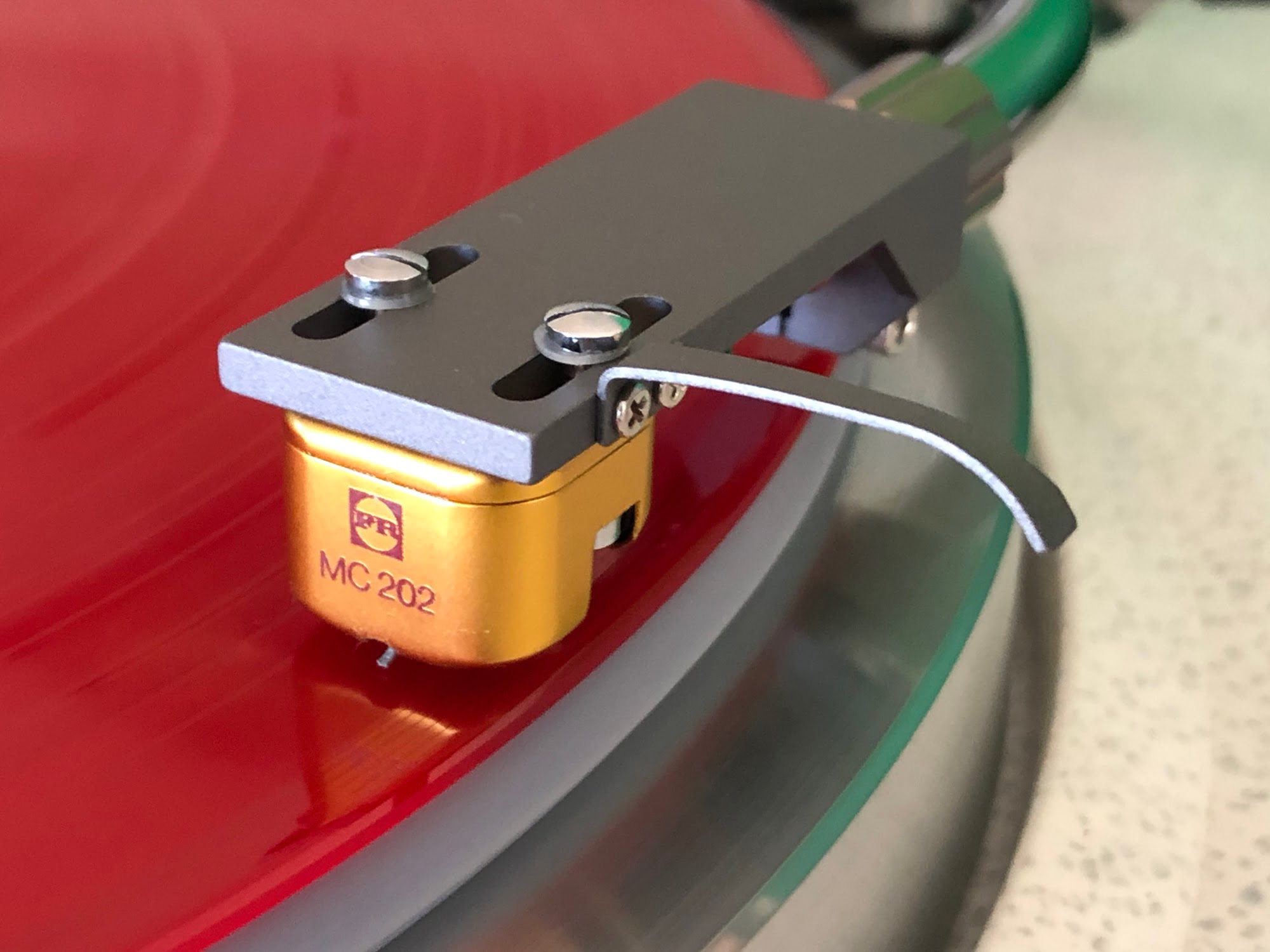
I tend to recommend keeping cartridges as close to original as possible. Yes, you can fit a boron rod cantilever and line-contact stylus to a cartridge like this MC-202, but it was never designed to run with them. It will sound different, it might be better, but it could be worse. Another factor to consider is cantilever length, which factors into the leverage and therefore the amount of movement the coils make, relative to the magnets. Cantilevers should be the same length as the original, wherever possible.
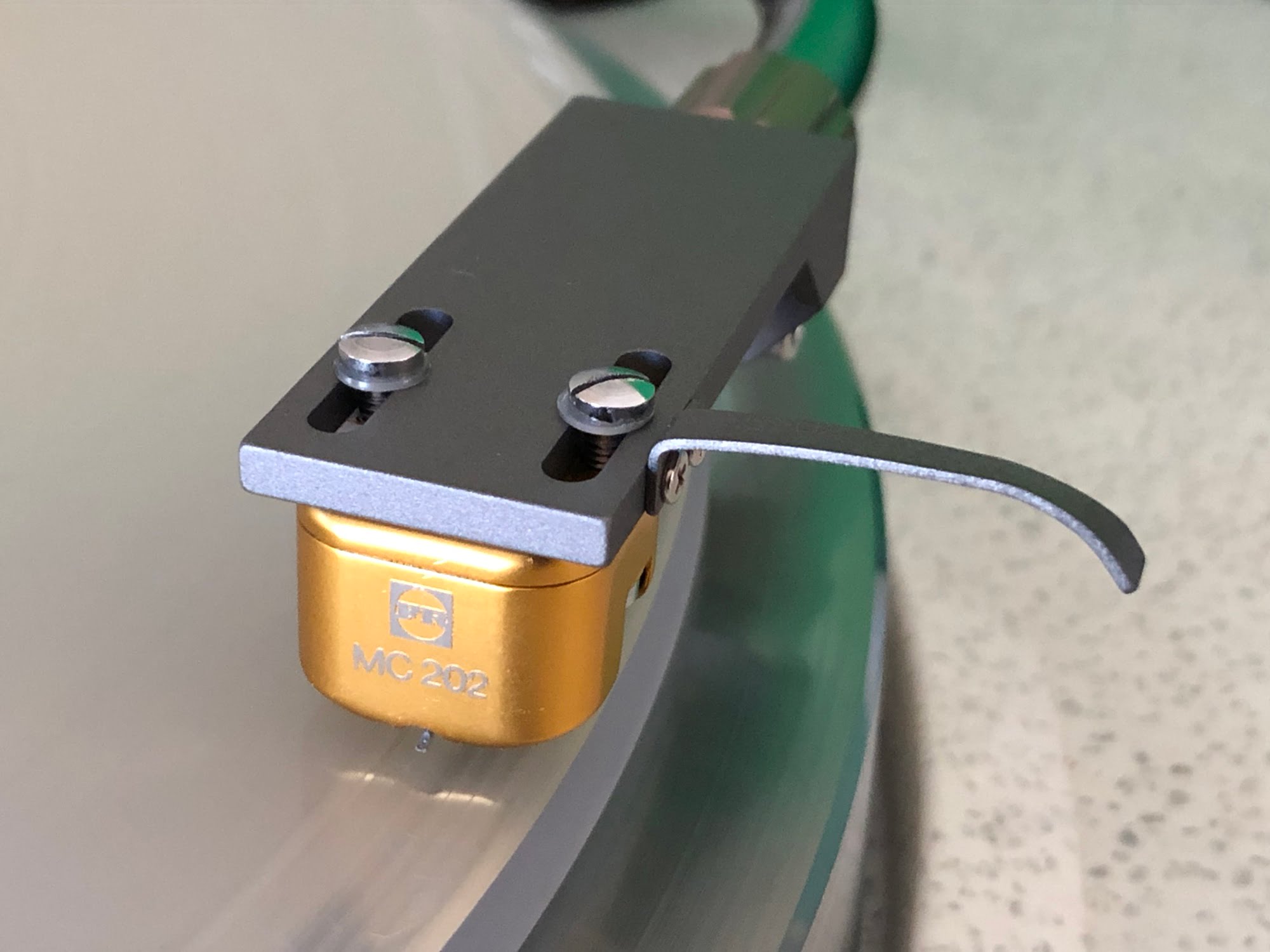
Specifications
Data from 1982
Frequency response: 20 Hz – 35,000 kHz
Channel separation: 27 dB at 1 kHz
Output: 0.17 mV, 5 cm/sec
Tracking force: 1 – 1.3 grams
Stylus : X (0.1 x 0.2 mils)
Weight: 7.5 grams
Compliance: 10 mm/N
Rec. load resistance: 9 Ohms
Price: $ 350 (1982)
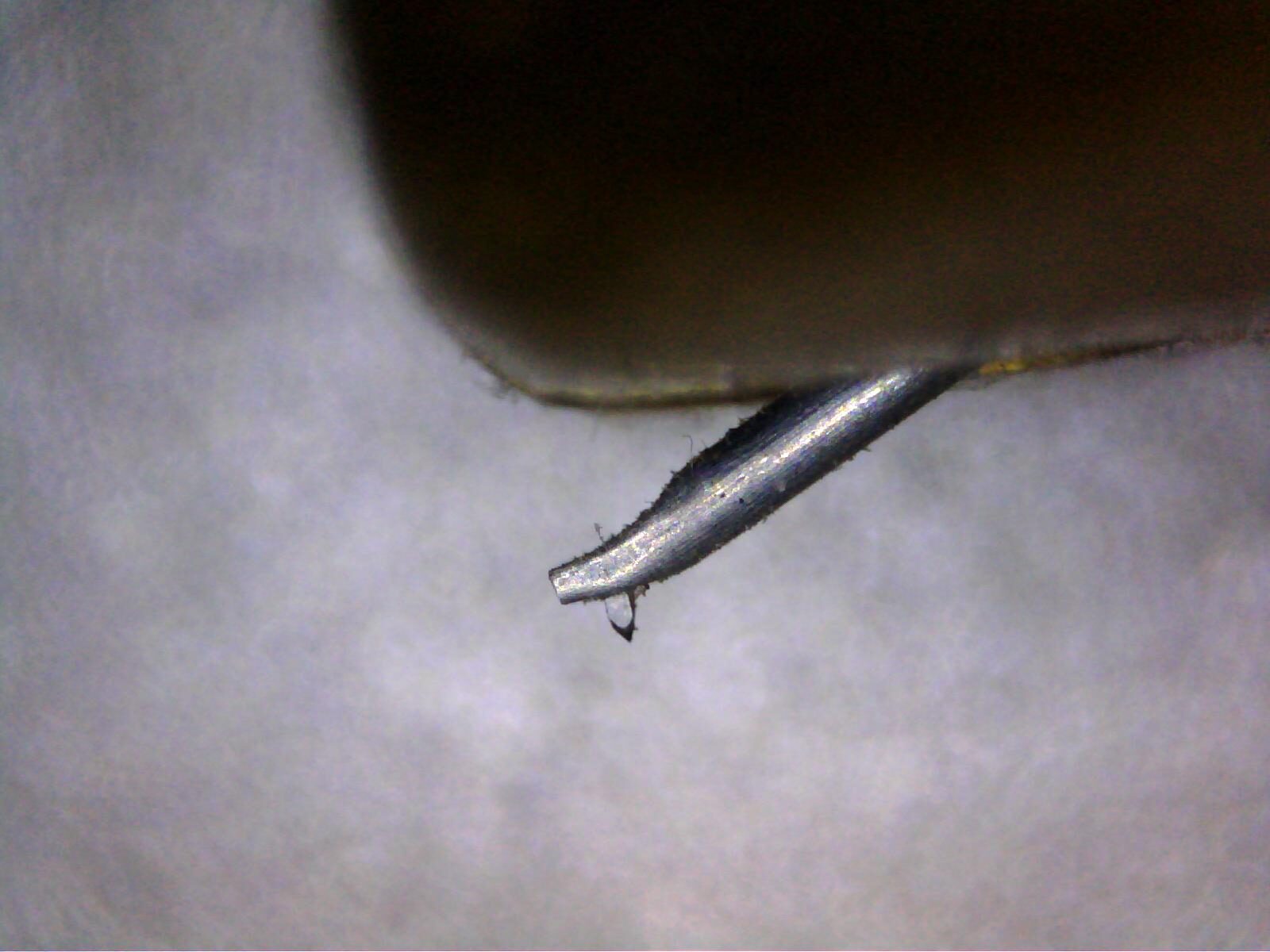
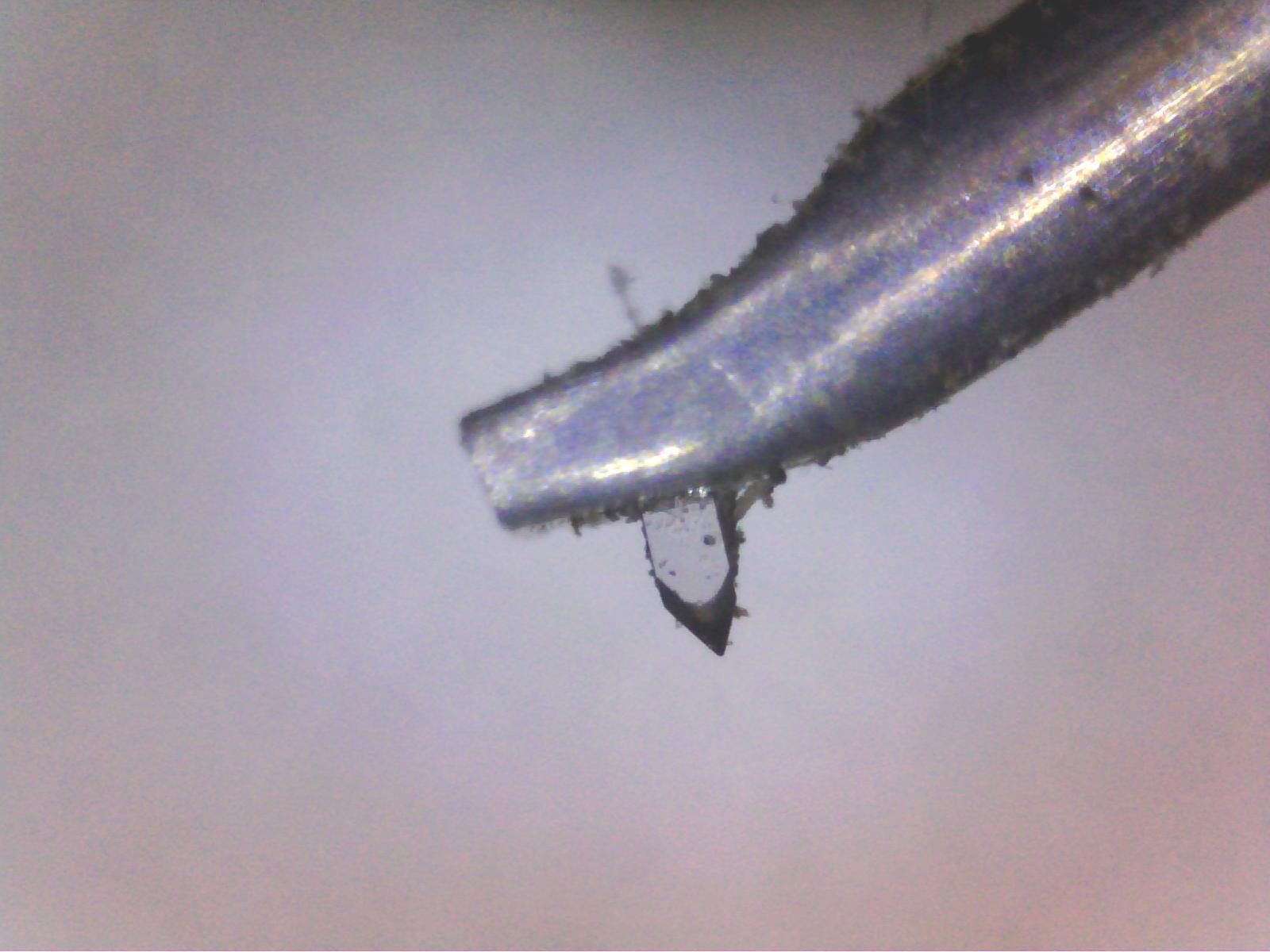
Ortofon VMS-20E Mk2
This is part of a cartridge inspection I recently made for a customer who wanted to know about the state of his beloved Ortofon VMS-20E Mk2 moving-magnet cartridge. Whilst not a high-end cartridge, the VMS 20E is a lovely-sounding one and the most important part is that my customer loves it.
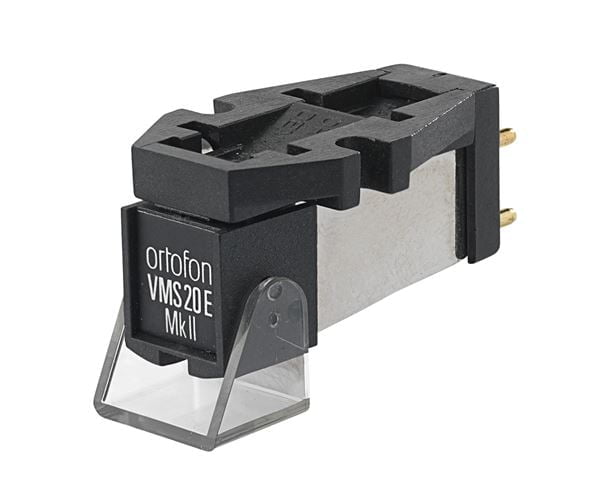
I cleaned and assessed it for him. In the image below you can see a few residual bits of dust/dirt which I removed after taking this image.


Summary
That’s probably enough cartridge inspection and stylus close-ups for one article but I hope you found this interesting. Cartridge inspection prior to and post-purchase can be helpful and deep cleaning as you’ve seen here can improve playback performance and extend the life of your cartridge.
If you’d like me to inspect and clean your cartridge/stylus, just head over to the Contact page and send me a few details!
Discover more from LiQUiD AUDiO
Subscribe to get the latest posts sent to your email.







